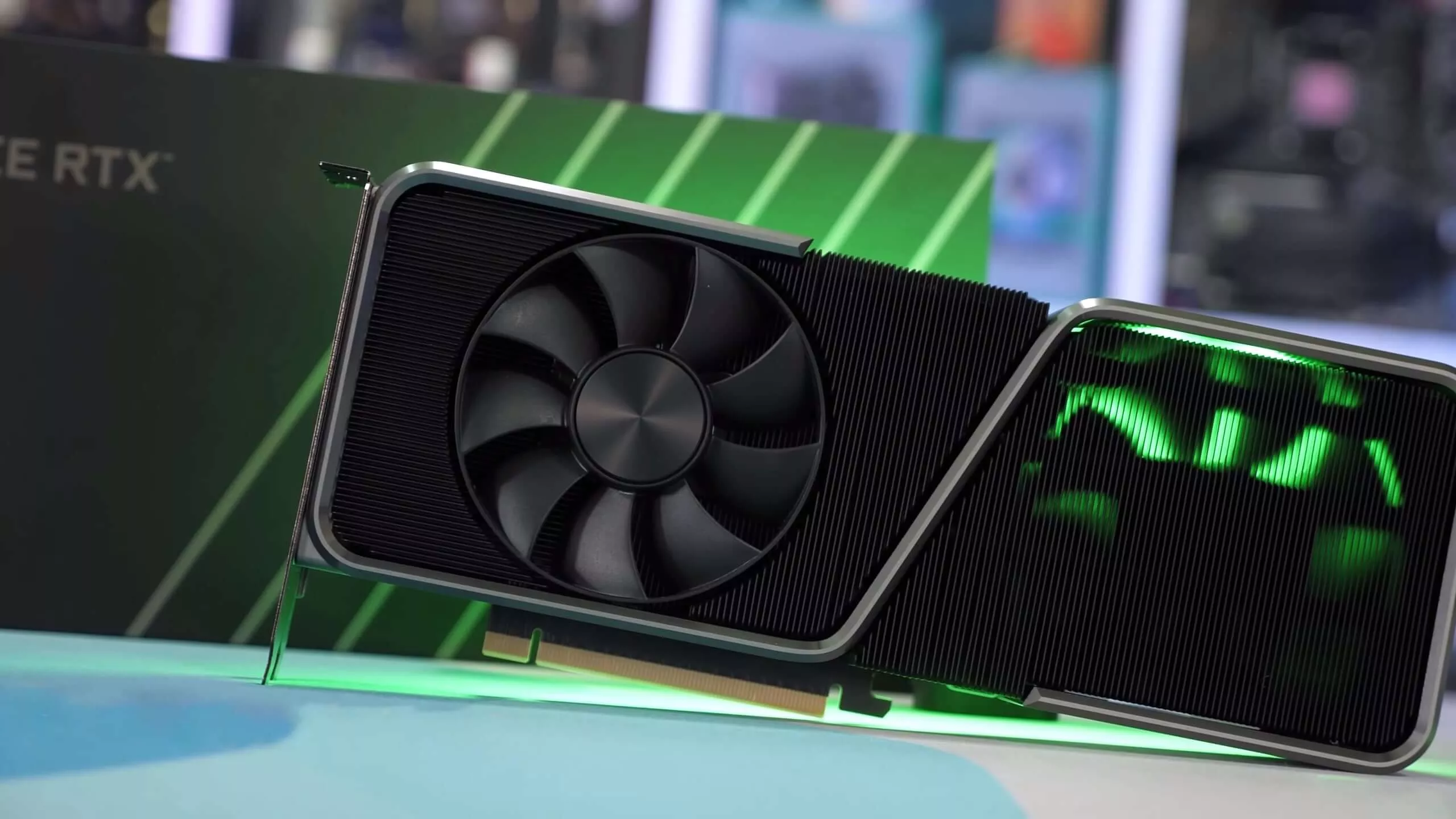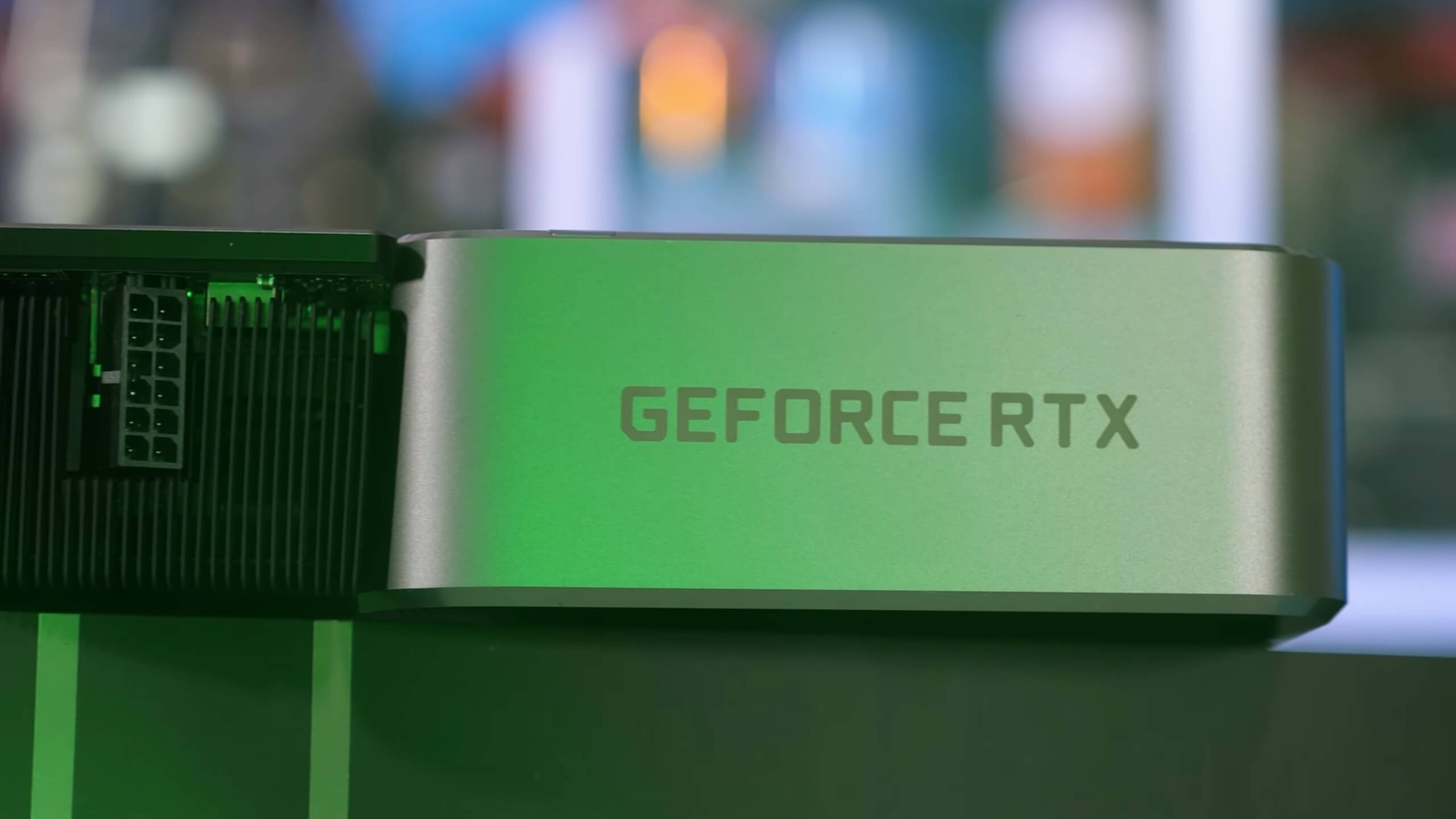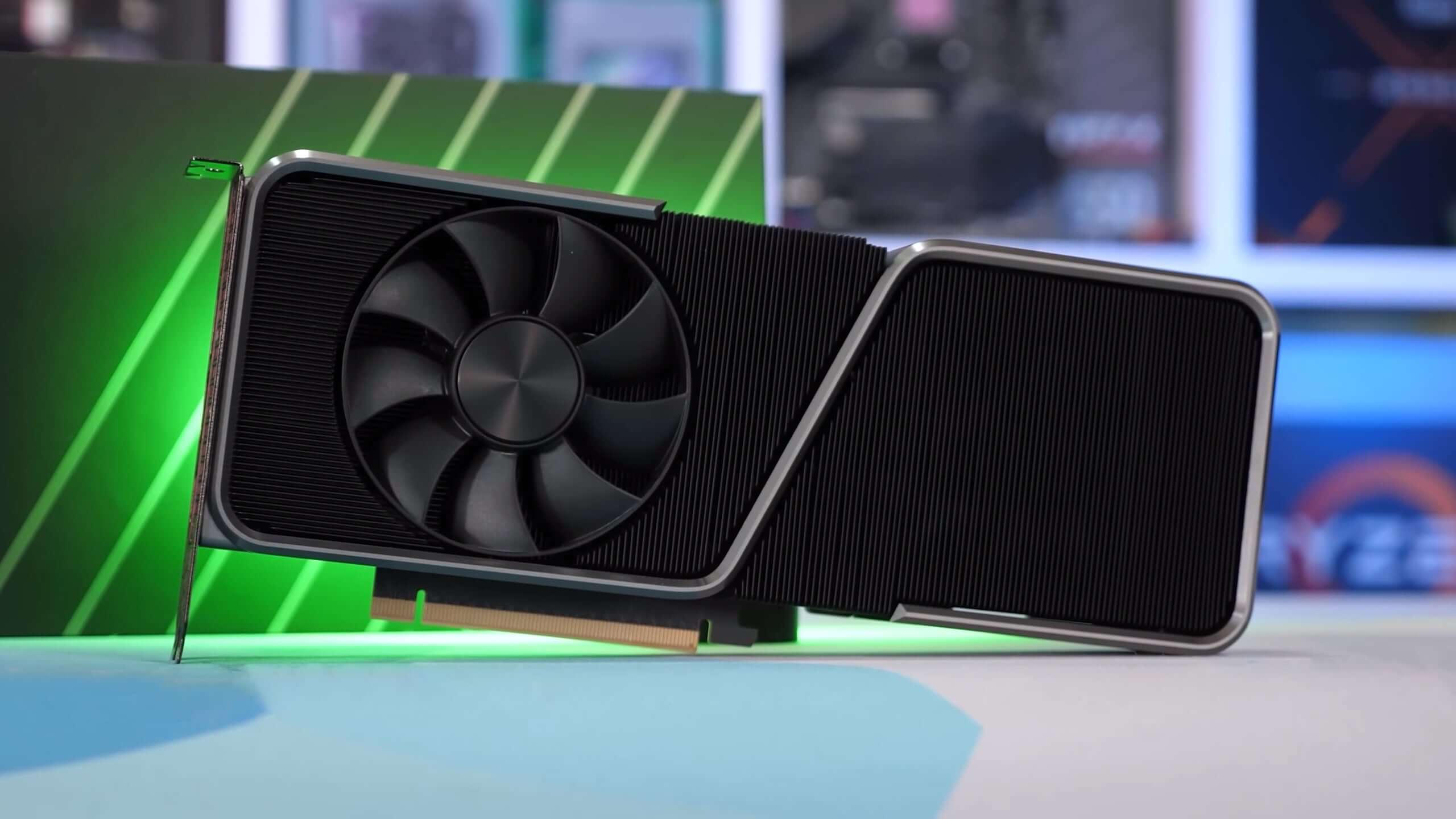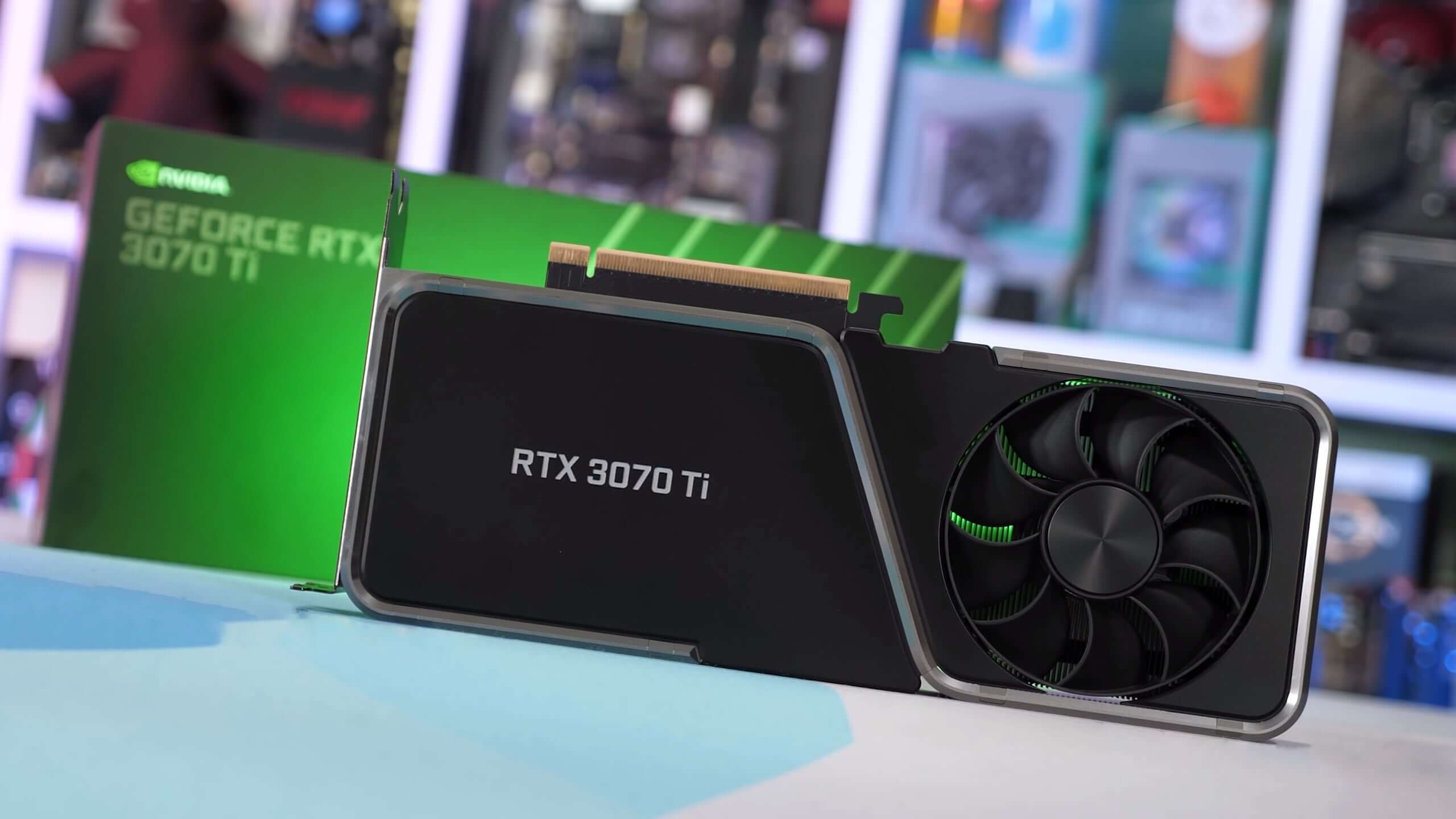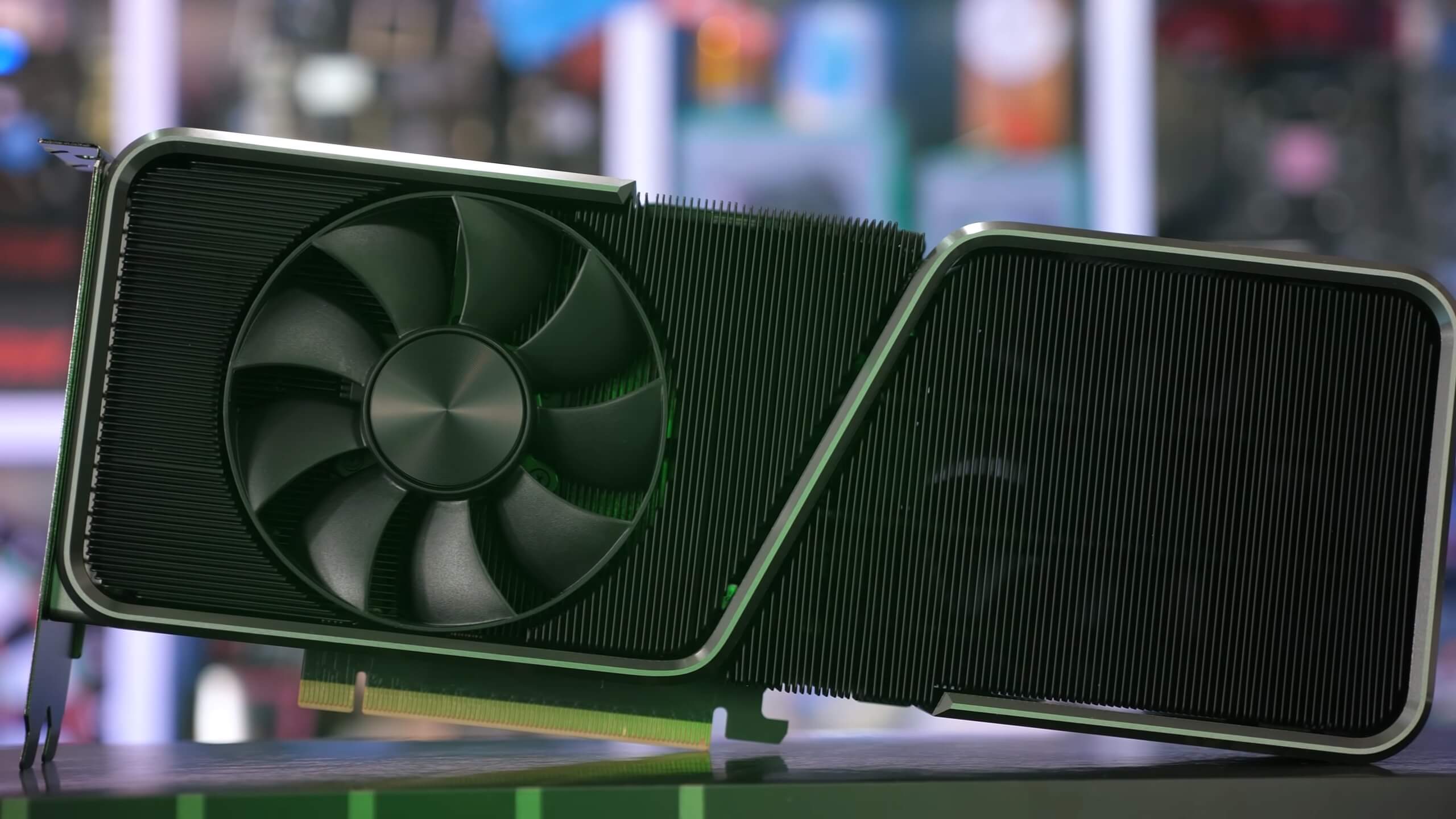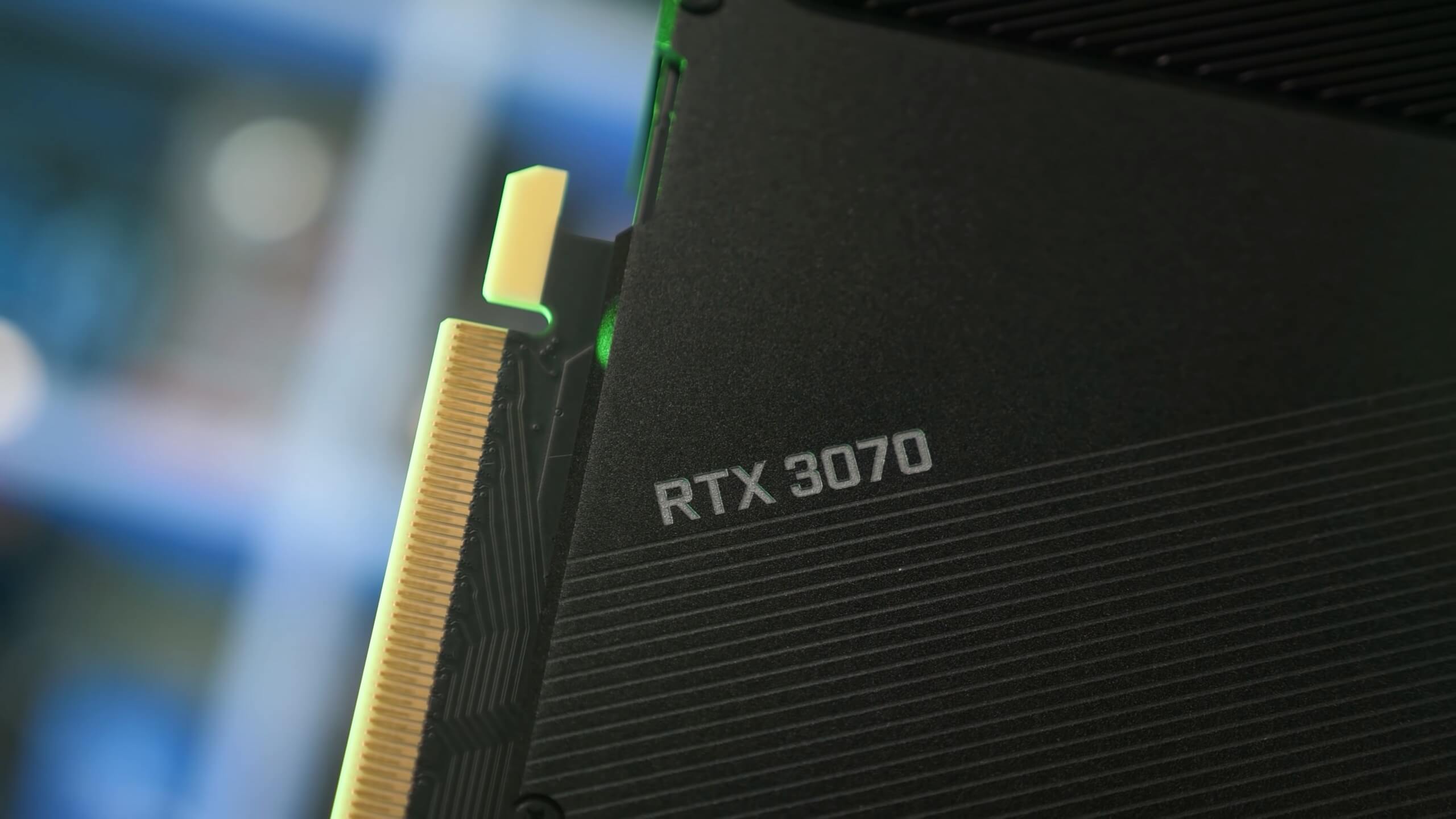[ad_1]
A week ago Nvidia released the GeForce RTX 3080 Ti and feedback from reviewers was almost entirely negative. There wasn’t a lot to like as Nvidia is charging 80% of the cost for an RTX 3090, but only gave gamers half as much memory and a much smaller FE graphics card. Put differently, the Ti is an RTX 3080 with 2GB more VRAM for a 71% increase in price. The extra cores amounted to a 10% boost on average, so a negligible performance uplift. Should we also mention the fact that you can’t really buy it anywhere?
For gamers, the RTX 3080 Ti is a flop, but for Nvidia it allows them to cash in big time on silicon that wasn’t good enough to be binned for use as an RTX 3090, extending their profit margins. So that’s the story of the RTX 3080 Ti, but what about the RTX 3070 Ti?
The GeForce RTX 3070 Ti comes in at half the price, which is quite incredible and just goes to show how ridiculous the 3080 Ti’s pricing is. The 50% reduction in price sees a 40% drop in core count, 14% fewer ROPs, 33% less memory bandwidth and capacity. The new Ti is based on the same GA104 silicon as the RTX 3070.
With an MSRP of $600, the RTX 3070 Ti slots in between the 3070 and 3080. That means it’s 20% more expensive than the 3070, at least at MSRP, and for that you’re getting just 4% more cores with no increase in ROPs. That’s a minuscule upgrade to the core, but thankfully Nvidia has tweaked the memory, opting to upgrade the GDDR6 memory with GDDR6X at the same 8GB capacity.
The upgrade to 19 Gbps memory from 14 Gbps means that the 256-bit wide memory bus now has a theoretical peak bandwidth of 608 GB/s up from 448 GB/s, a 36% increase.
While we’re looking at a piddly 4% increase in cores, the 3070 Ti does improve memory bandwidth by 36%. How much this will improve performance overall will likely vary from game to game, so that might help make the testing a bit more interesting.
With that said, let’s go over a few of the benchmarks using the Founders Edition card. All benchmark results are based on AMD and Nvidia GPUs running at the official specifications, so no factory overclocking. In total we tested 12 games at 1440p and 4K using our Ryzen 9 5950X test system, which has been configured with 32GB of dual-rank, dual-channel DDR4-3200 CL14 memory.
Benchmarks
First up we’ve got Assassin’s Creed Valhalla. This AMD sponsored title heavily favors Radeon GPUs and for some reason Nvidia has been unable to optimize their hardware for this game. As a result the 3070 Ti is 18% slower than the 6800 and 28% slower than the 6800 XT, which is a massive performance difference.
When compared to the RTX 3070, it’s 11% faster, which is to be expected given the specifications.
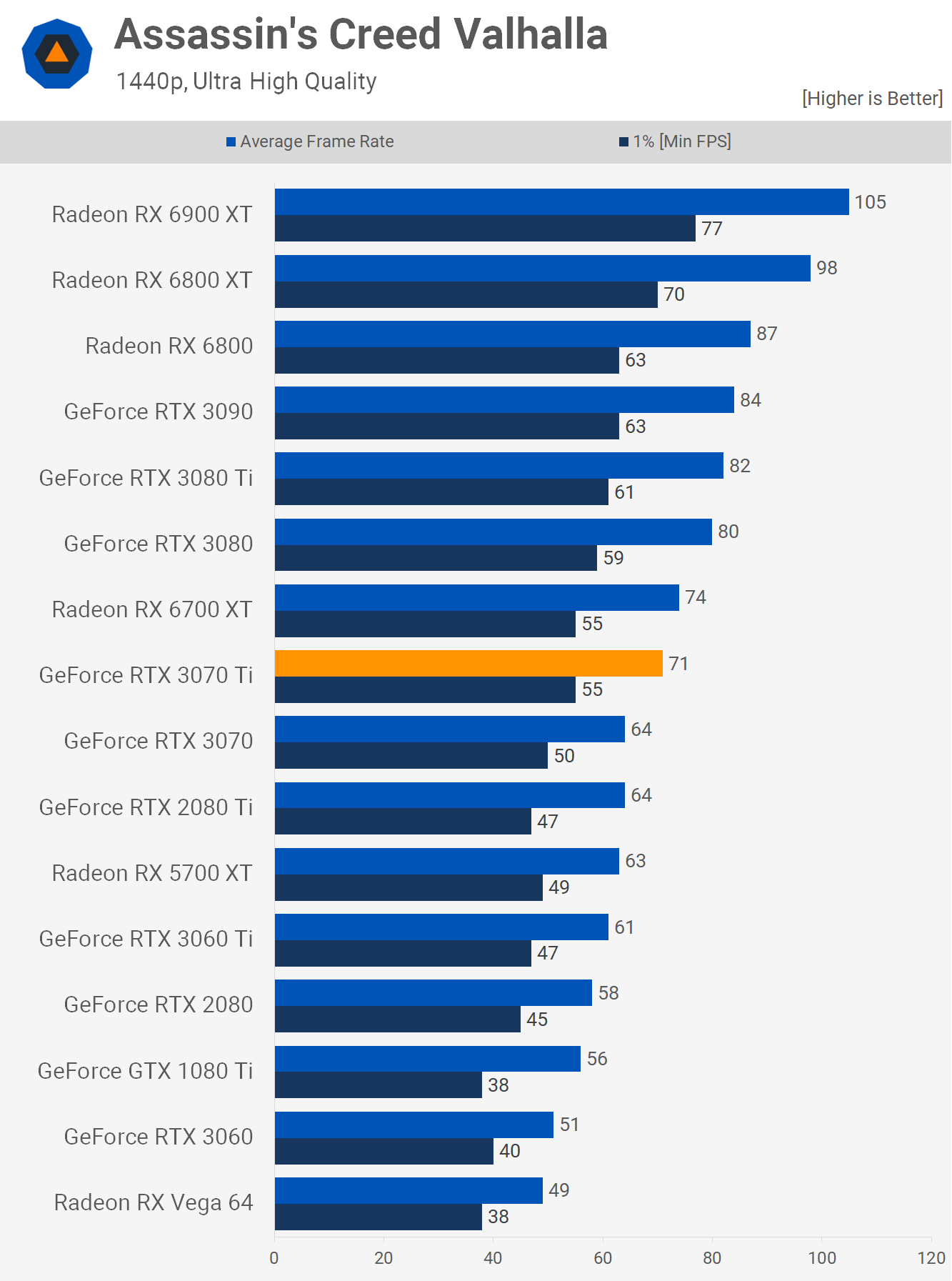
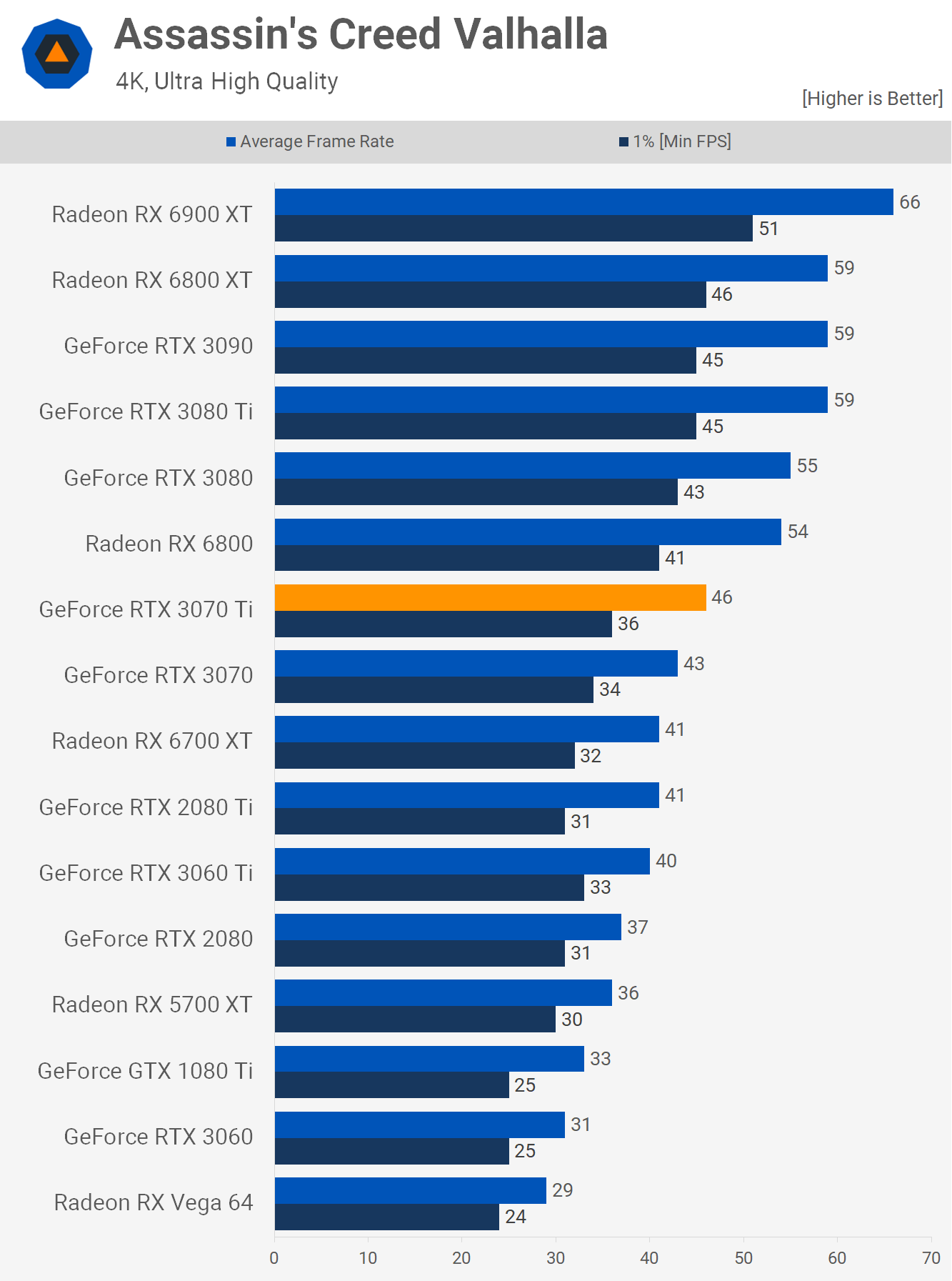
Nvidia’s 2xFP32 design does work better at 4K and as a result the 3070 Ti is now 15% slower than the 6800 and 22% slower than the 6800 XT. Still big margins, but smaller than what was seen at 1440p. Unfortunately the additional memory bandwidth didn’t help the 3070 Ti at 4K as it was just 7% faster than the 3070. Single-digit gains aren’t impressive for a 20% increase in MSRP.
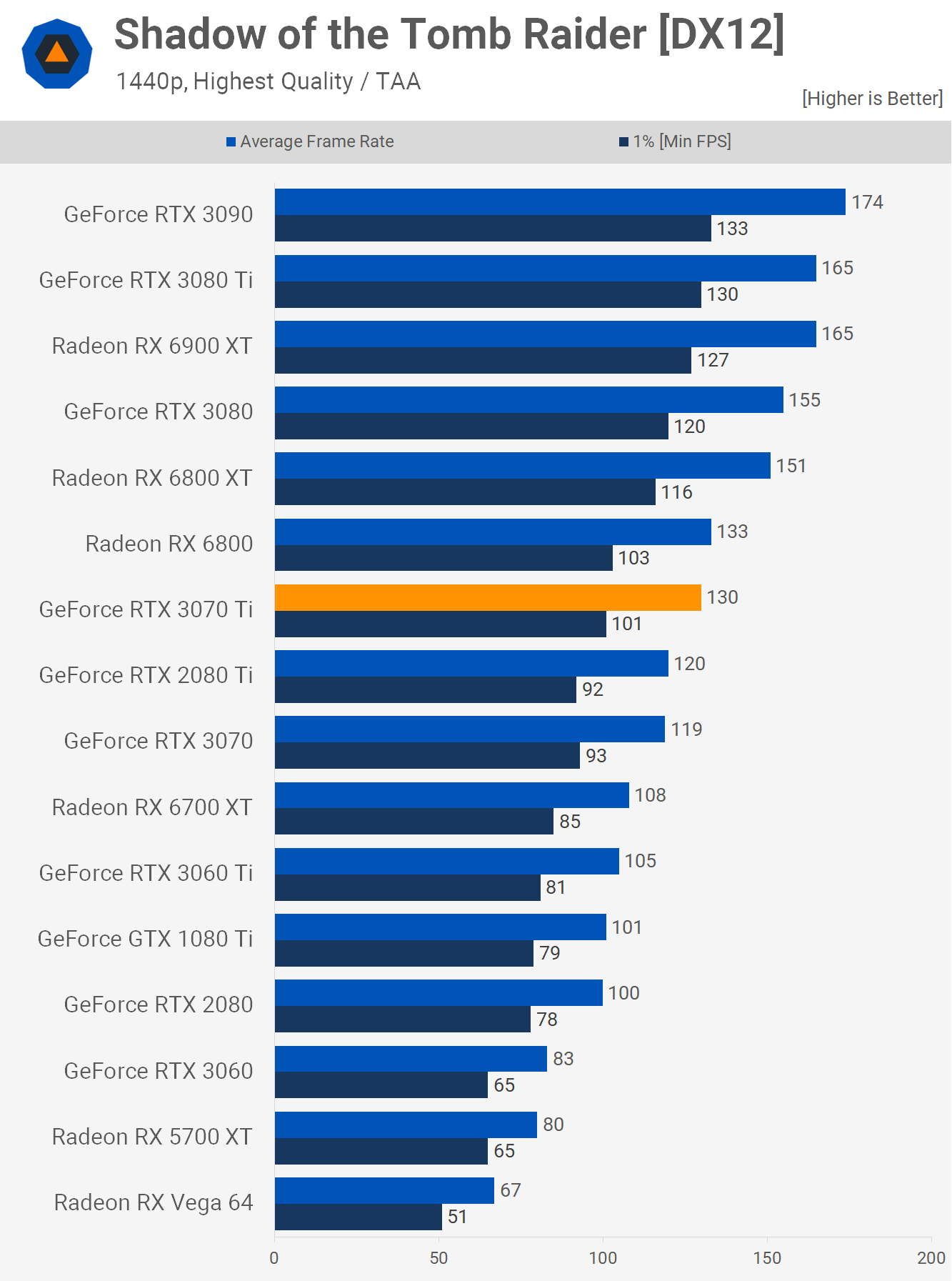
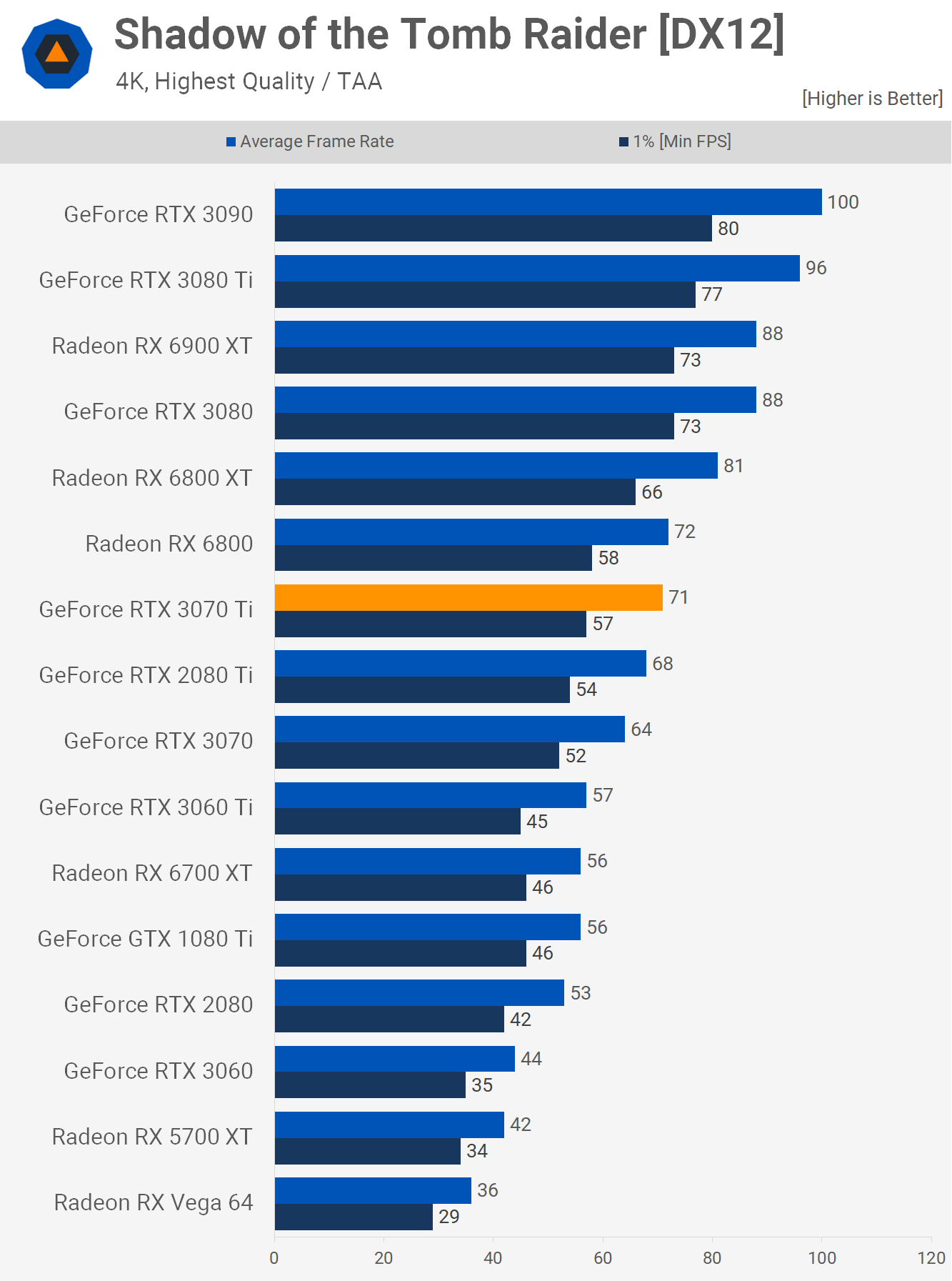
Shadow of the Tomb Raider is sponsored by Nvidia, though I consider this to be a neutral title, at least for rasterization performance which is what we’re looking at here. The RTX 3070 Ti matched the RX 6800 with 130 fps on average at 1440p, making it 14% slower than the 6800 XT, which isn’t bad given it’s 8% cheaper, though it does only feature half the VRAM.
When compared to the 3070, we’re looking at single digit gains. This time the 3070 Ti was 9% faster. The 4K margins look similar: the 3070 Ti matched the RX 6800, and it was 12% slower than the 6800 XT. When compared to the original RTX 3070 it was 11% faster, which is the biggest margin we’ve seen so far, certainly not amazing and not nearly enough to justify the 20% increase in MSRP.
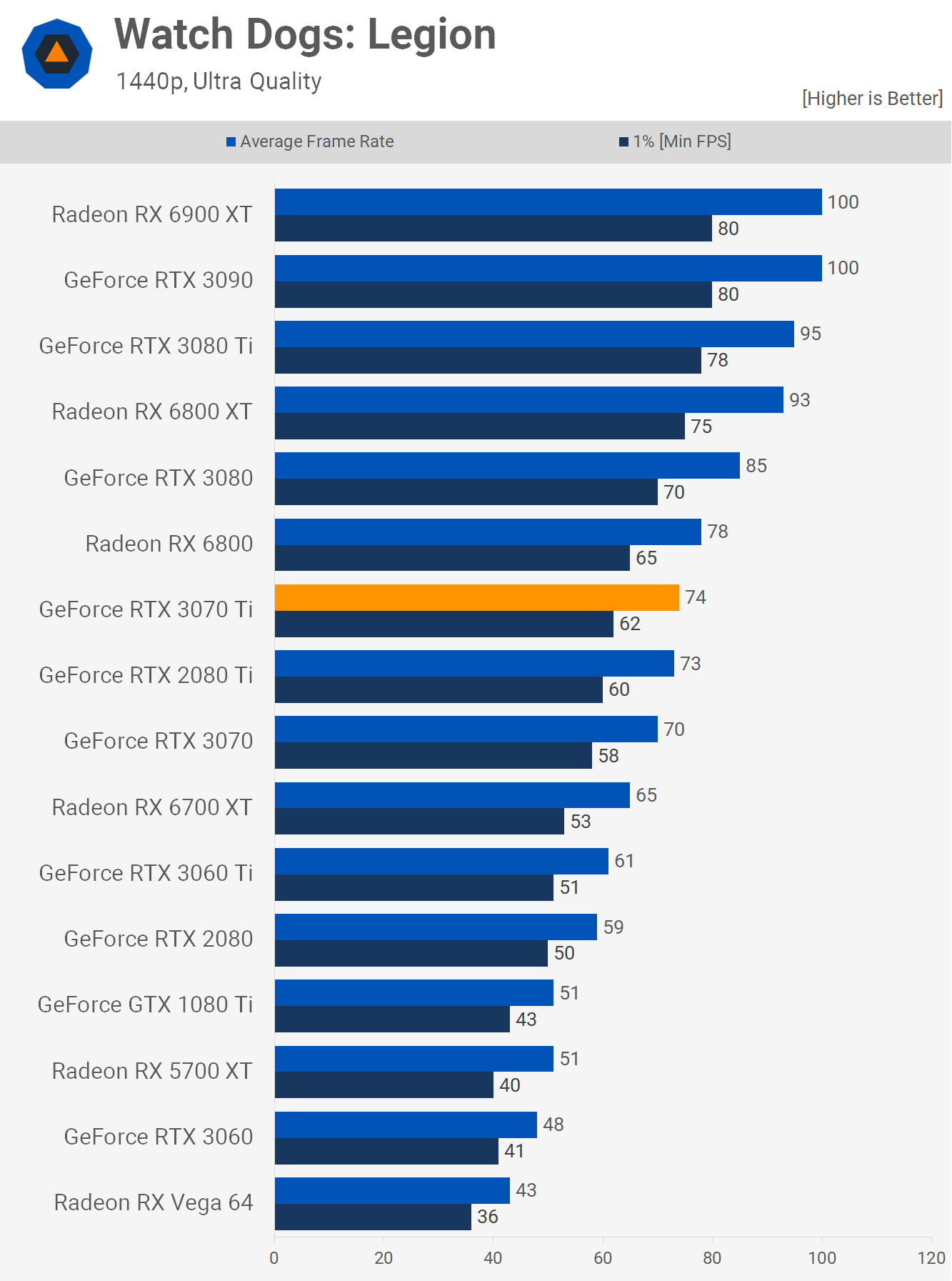
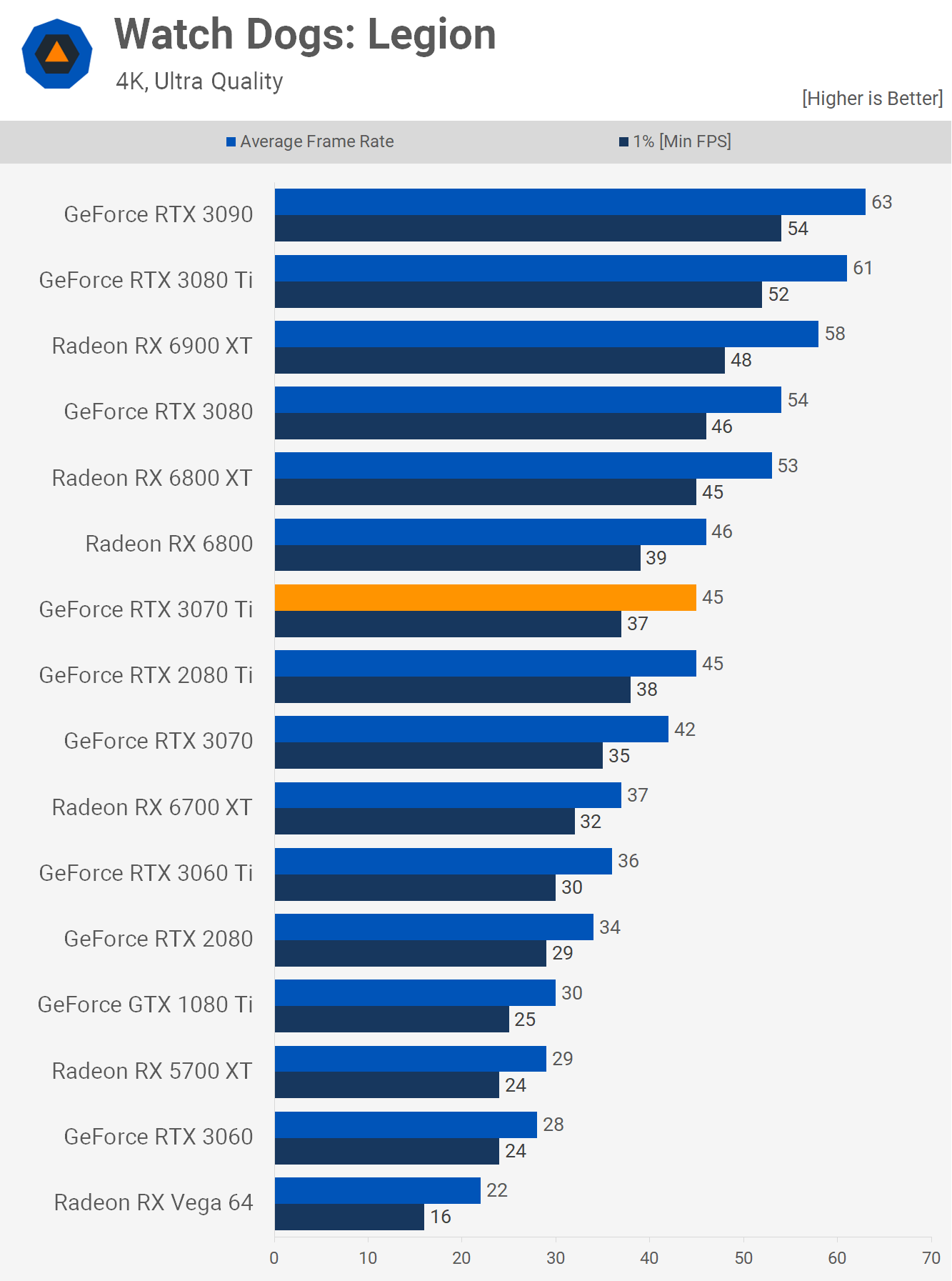
Watch Dogs: Legion is another Nvidia sponsored title that supports ray tracing and DLSS, but it works well on both AMD and Nvidia hardware. The RTX 3070 Ti is seen trailing the RX 6800 by a 5% margin, making it a whopping 20% slower than the 6800 XT. We’re also looking at a tiny 4% boost over the 3070.
Moving up to 4K sees the 3070 Ti match the RX 6800, though it was barely any faster than the standard 3070.
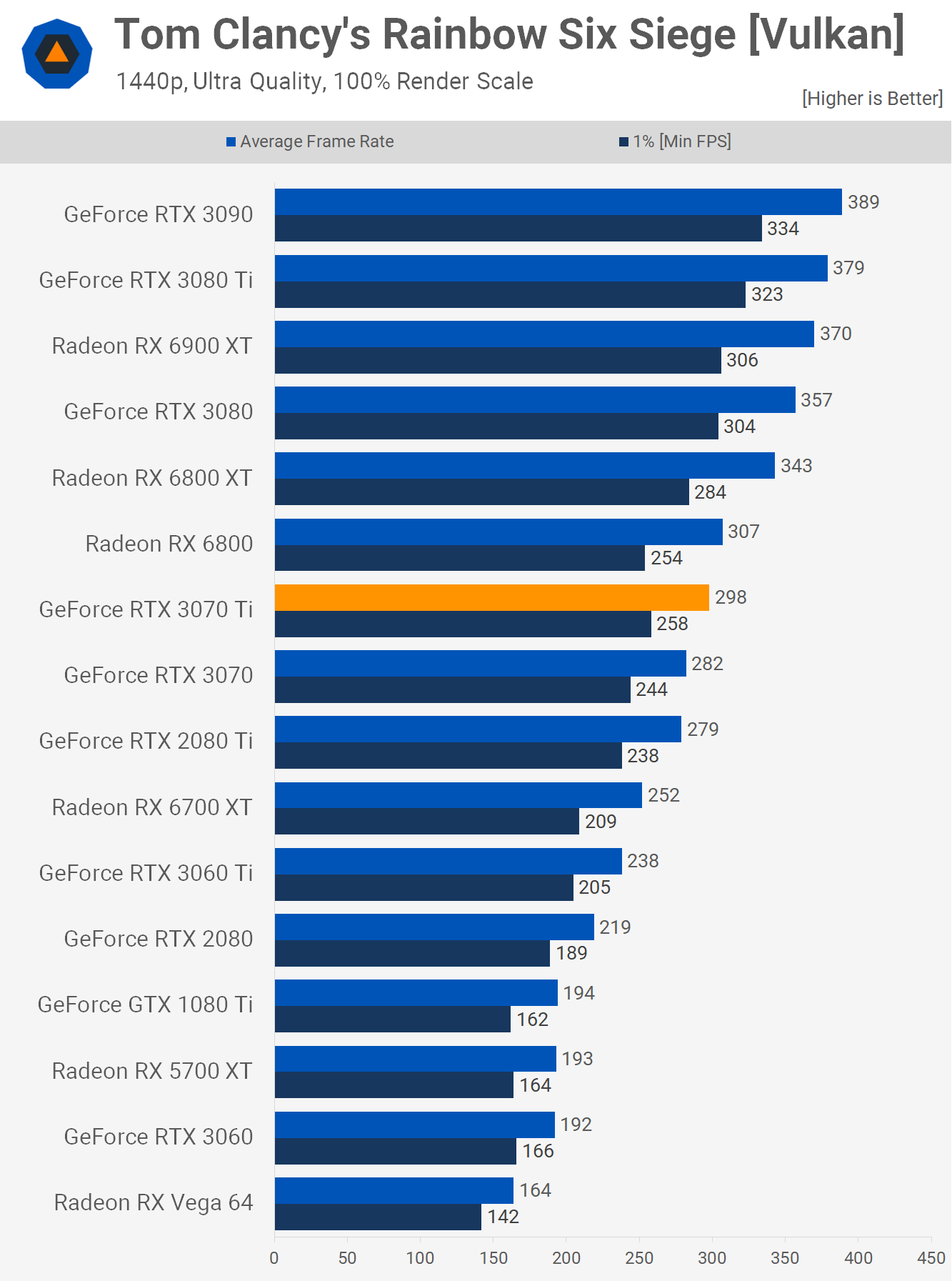
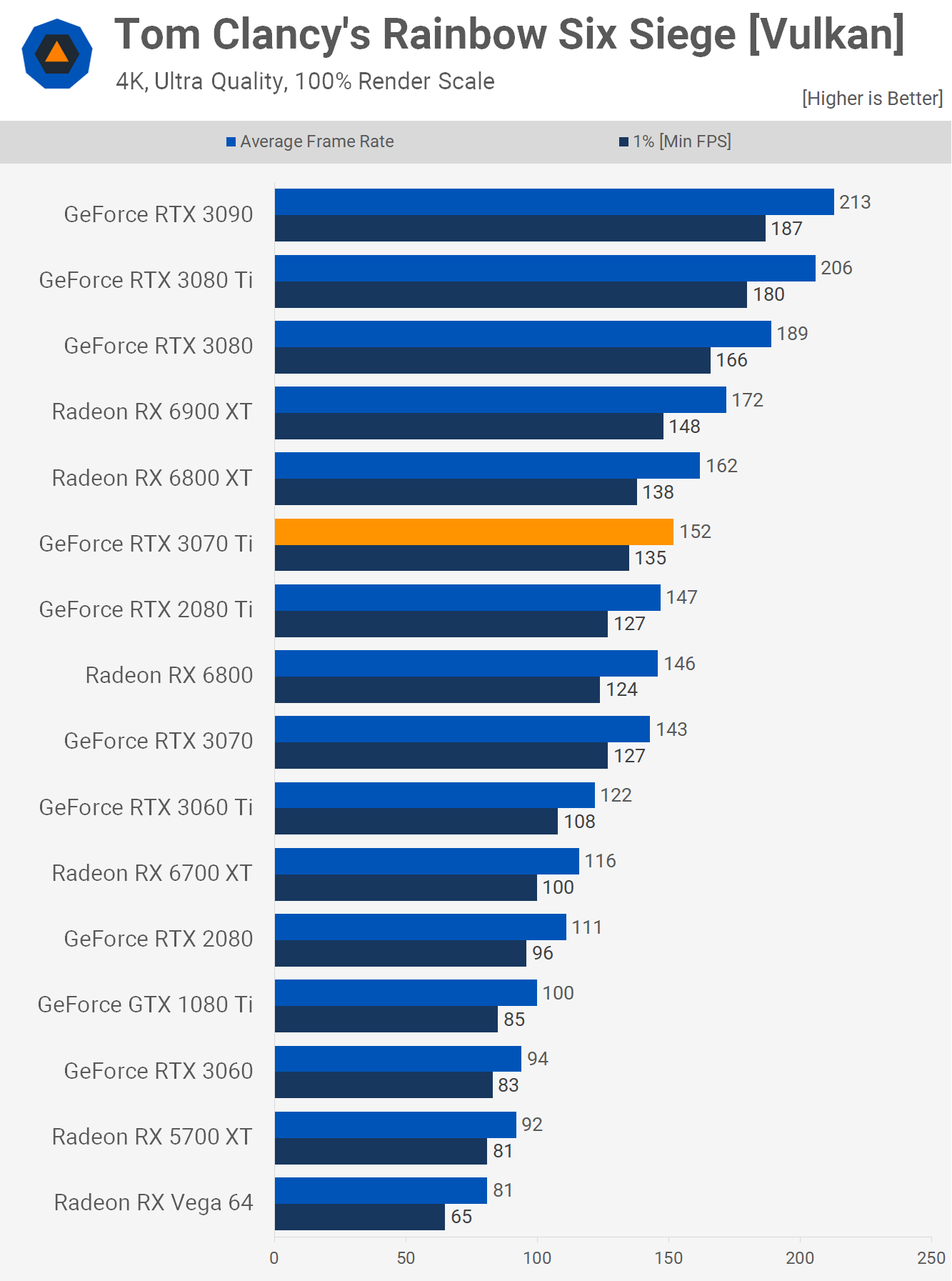
There are probably much cheaper GPUs you could use for playing competitive titles, but if you want ~300 fps using the maximum visual quality settings, the 3070 Ti will suffice as it delivered RX 6800-like performance, making it just 13% slower than the 6800 XT, but also 6% faster than the 3070.
The 4K frame rates are a lot less ridiculous as the 3070 Ti was good for 152 fps on average, placing it ahead of the RX 6800 by a small 4% margin.
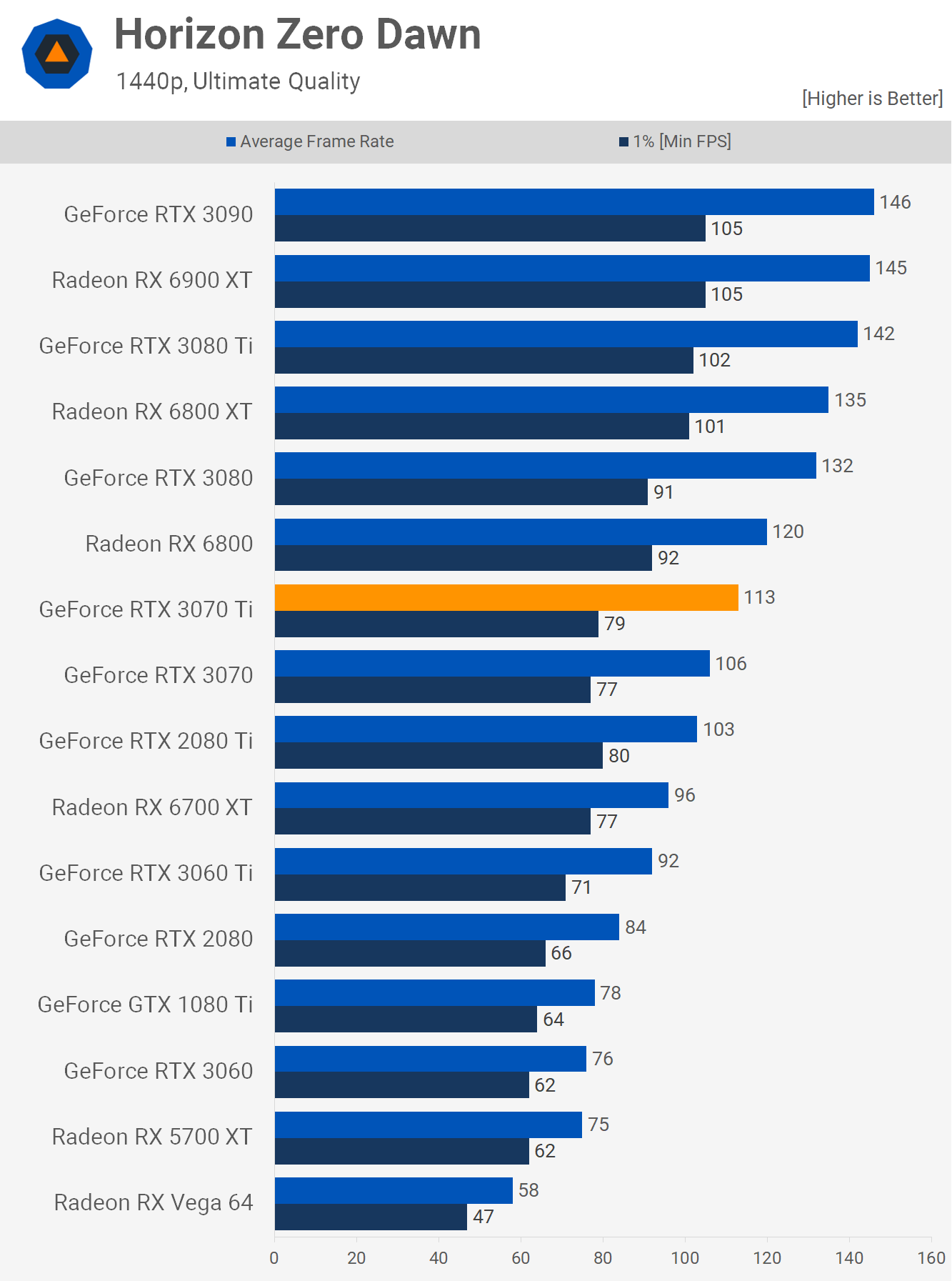
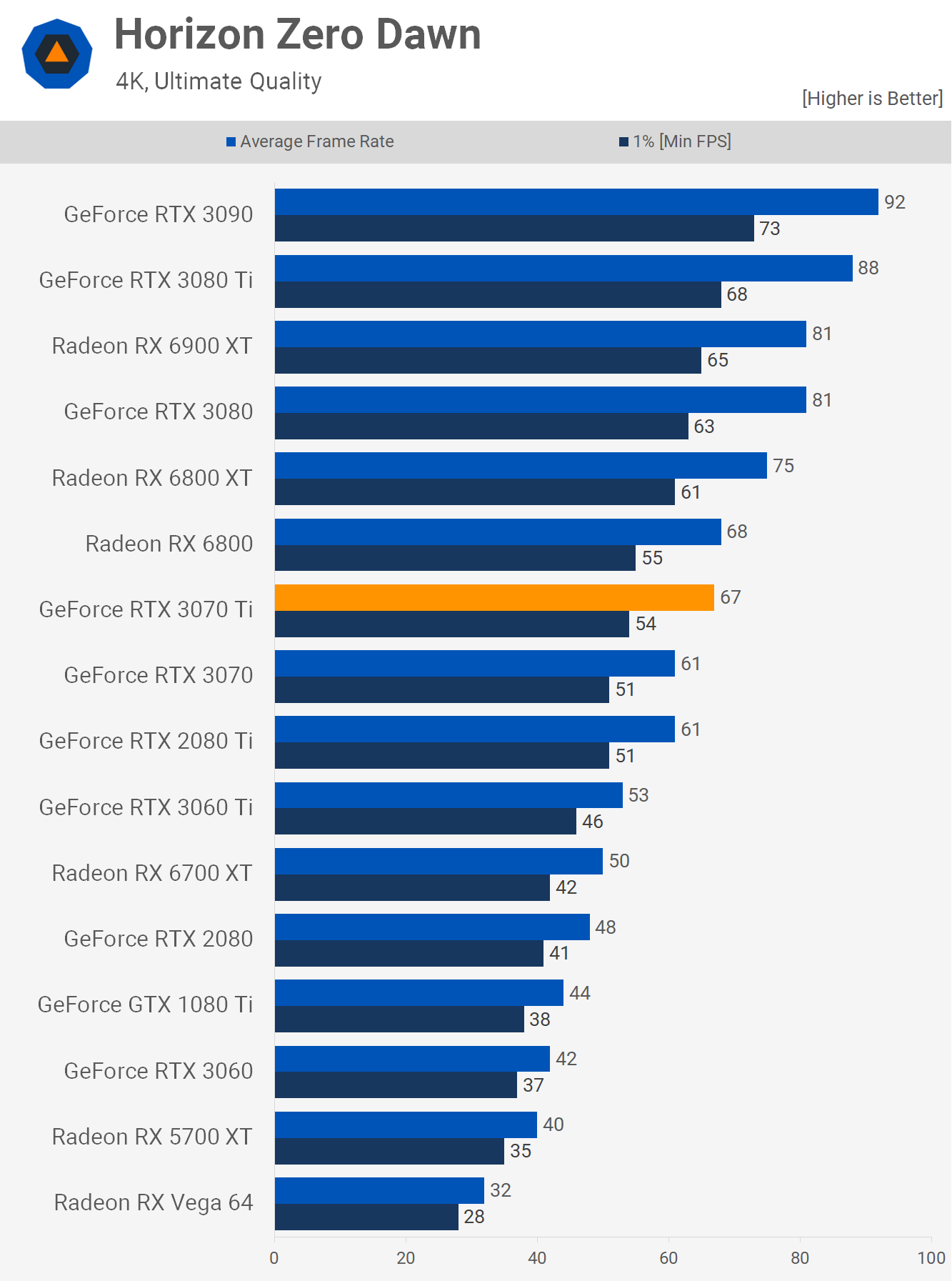
Next up we have Horizon Zero Dawn and once again the 3070 Ti is slower than the RX 6800, this time falling behind by 6% margin and that meant it was 16% slower than the 6800 XT. Not a terrible result, but it was only 7% faster than the 3070, so you have to wonder what the point is.
At 4K we do see the 3070 Ti beat the original 3070 by a 10% margin, but that hardly offsets the 20% increase in cost.
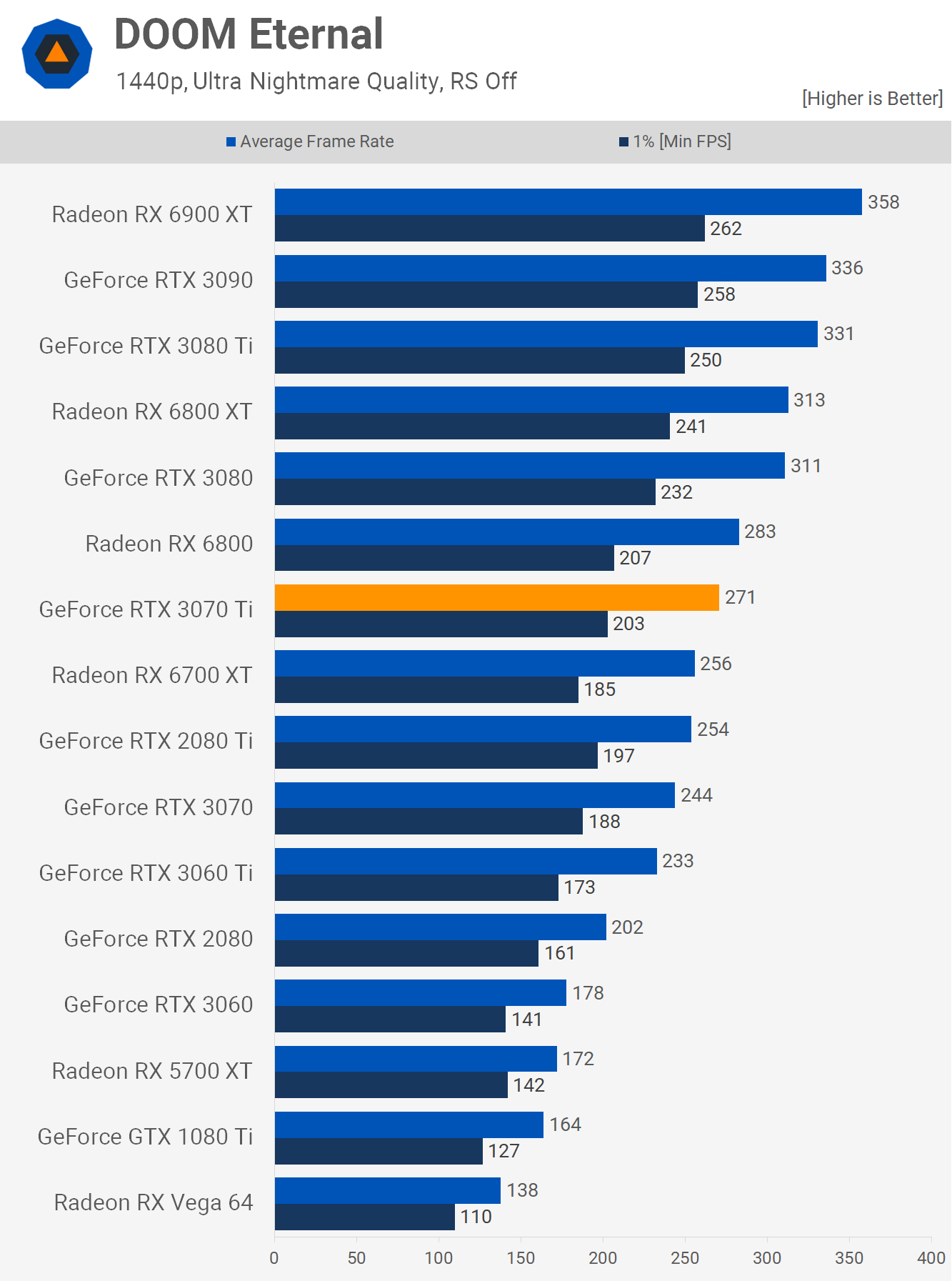
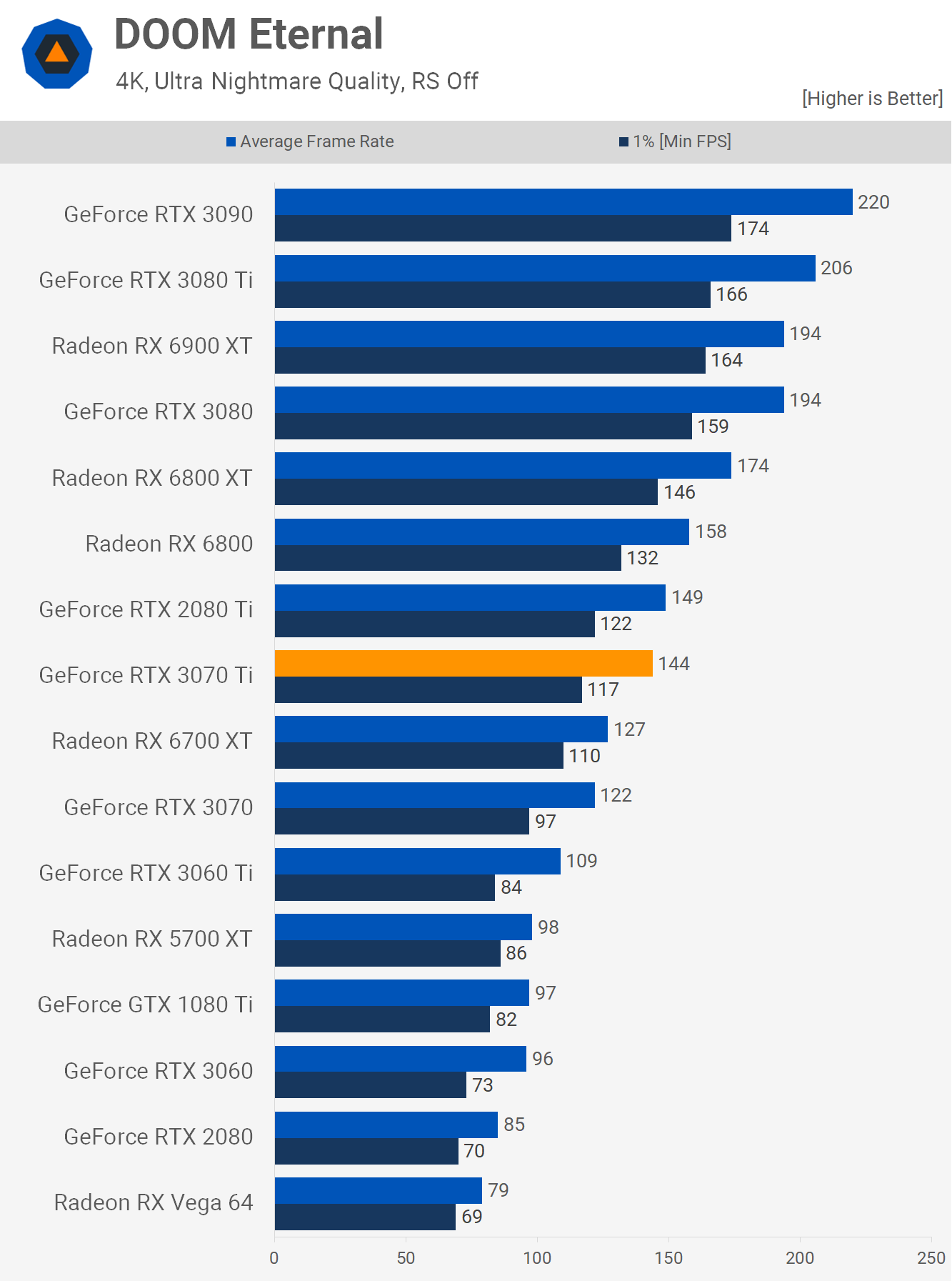
Testing with Doom Eternal reveals similar margins between the 3070 Ti and RX 6800, though the cheaper Radeon GPU was still 4% faster and the 6800 XT was 15% faster.
Now at 4K we see something interesting. It’s worth noting that at 4K, using the ultra nightmare quality settings, Doom Eternal calls for 9GB of VRAM and that’s not allocation but actual memory usage. As such, GPUs with 8GB or less VRAM struggle more at 4K relative to models with more memory. At 1440p the game only calls for 7 GB of VRAM.
For example, the RTX 3080 is 27% faster than the 3070 at 1440p, but at 4K that margin more than doubles to 59%. The 3070 Ti has the same memory capacity as the 3070, but bandwidth has been increased by 36% and that really helps here. At 1440p the 3070 Ti was 11% faster than the 3070, but at 4K it’s 18% faster.
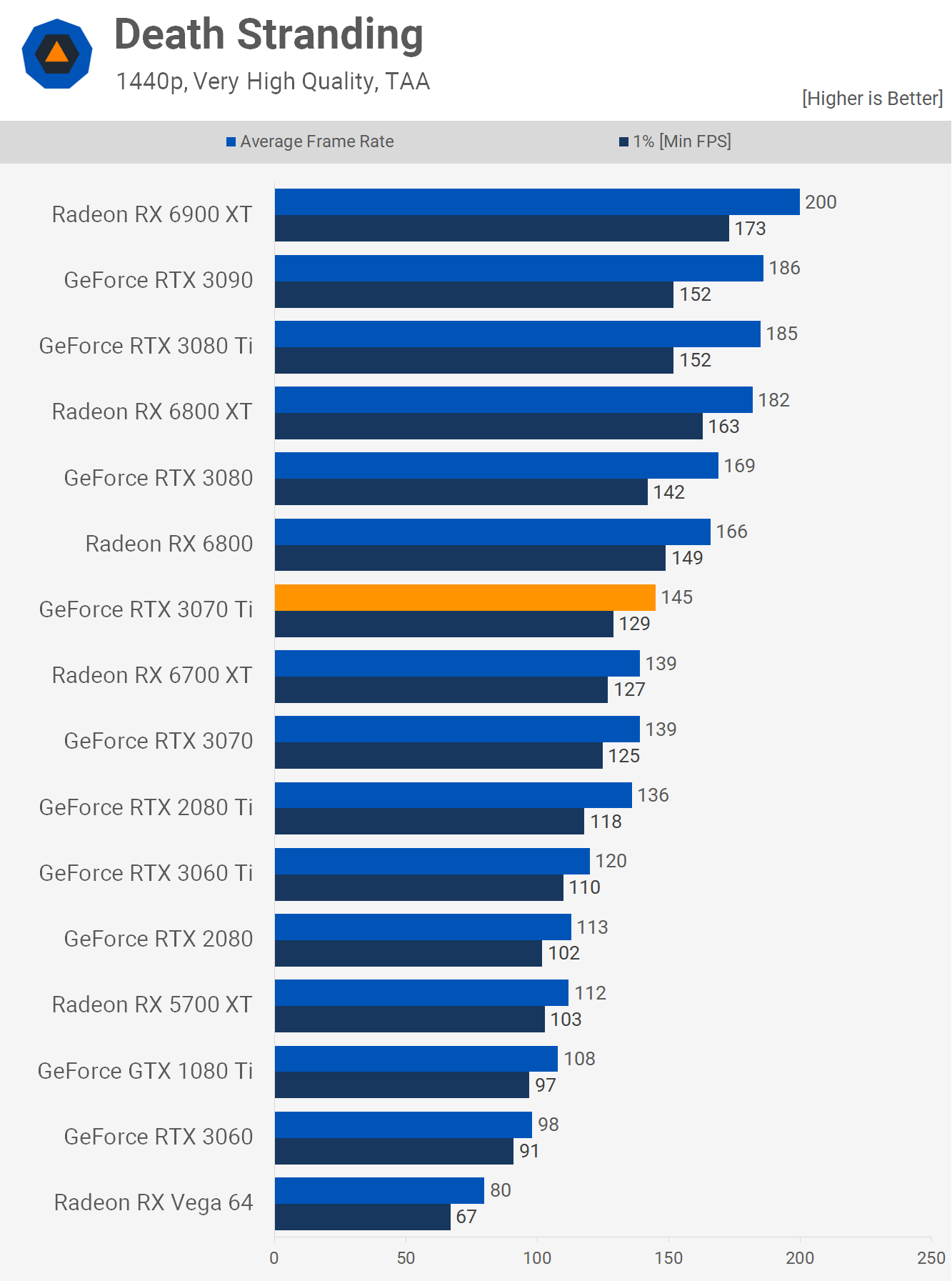
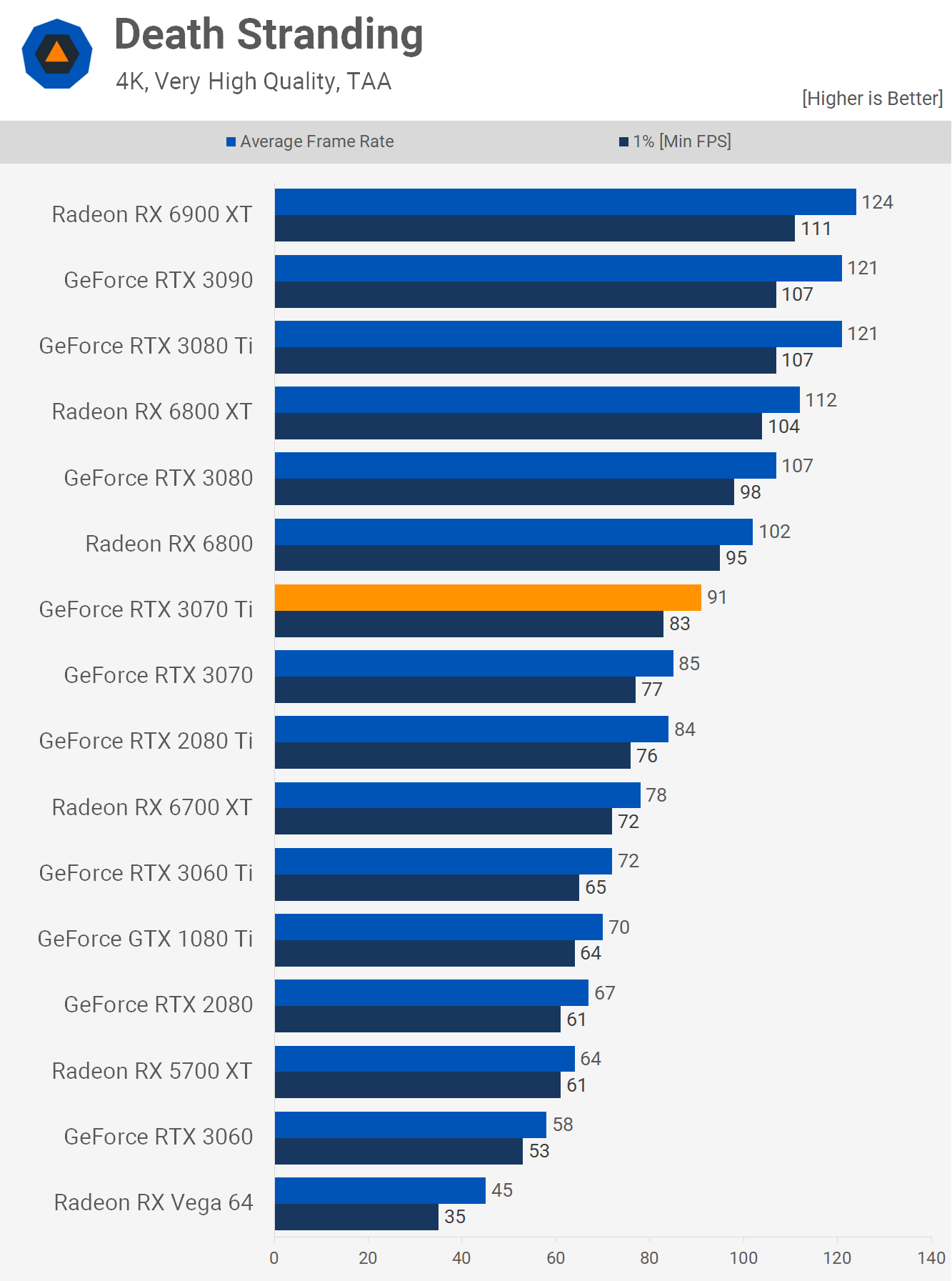
Moving on to the Death Stranding testing, we find some particularly disappointing results for the RTX 3070 Ti. Here it was 13% slower than the RX 6800 and 20% slower than the 6800 XT. But most disappointing of all was the margin to the 3070, here it was just 4% faster.
That margin does increase at 4K, but even here the 3070 Ti was just 7% faster than the 3070 and that meant it was still 11% slower than the RX 6800 and 19% slower than the 6800 XT.
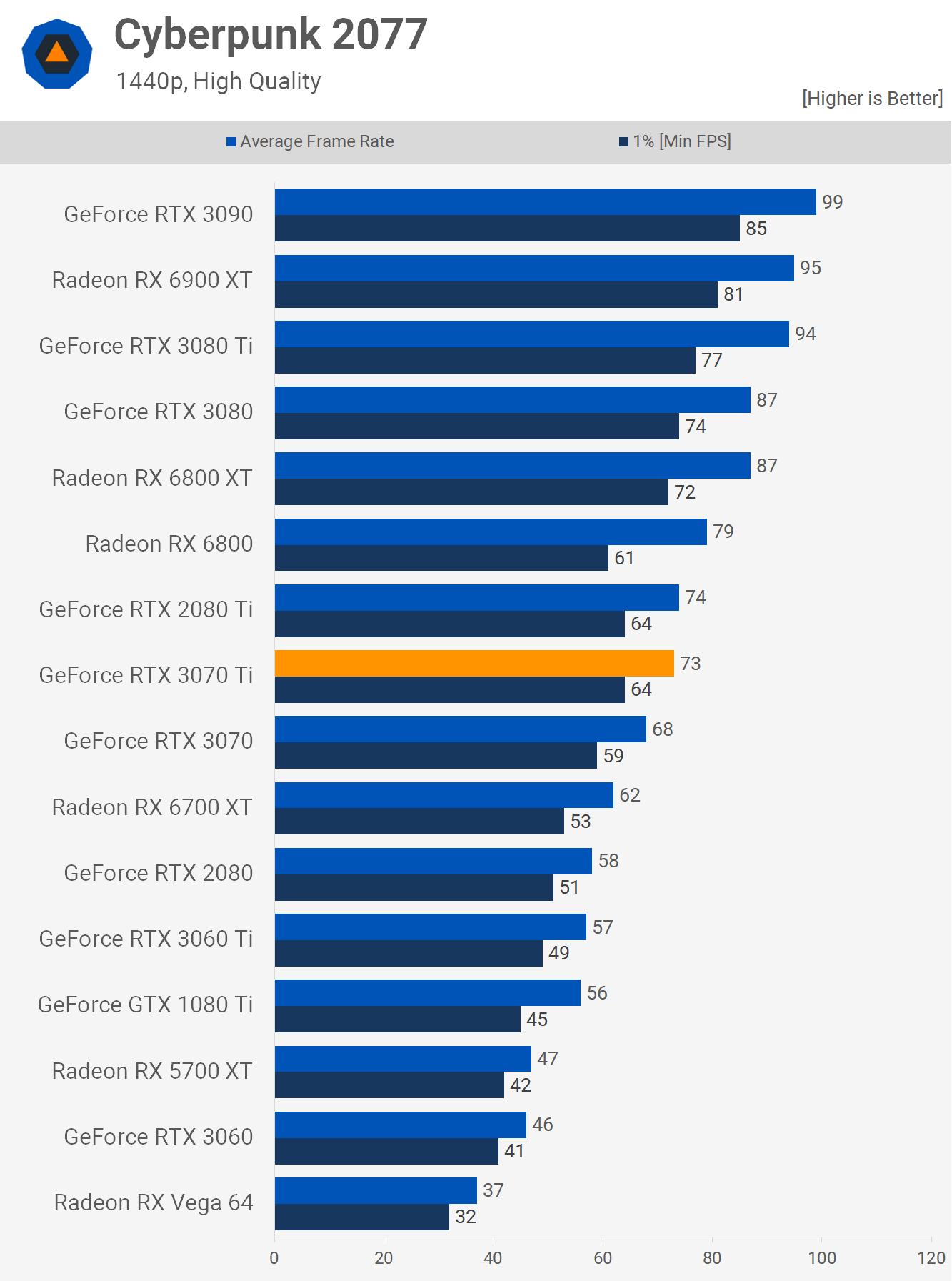
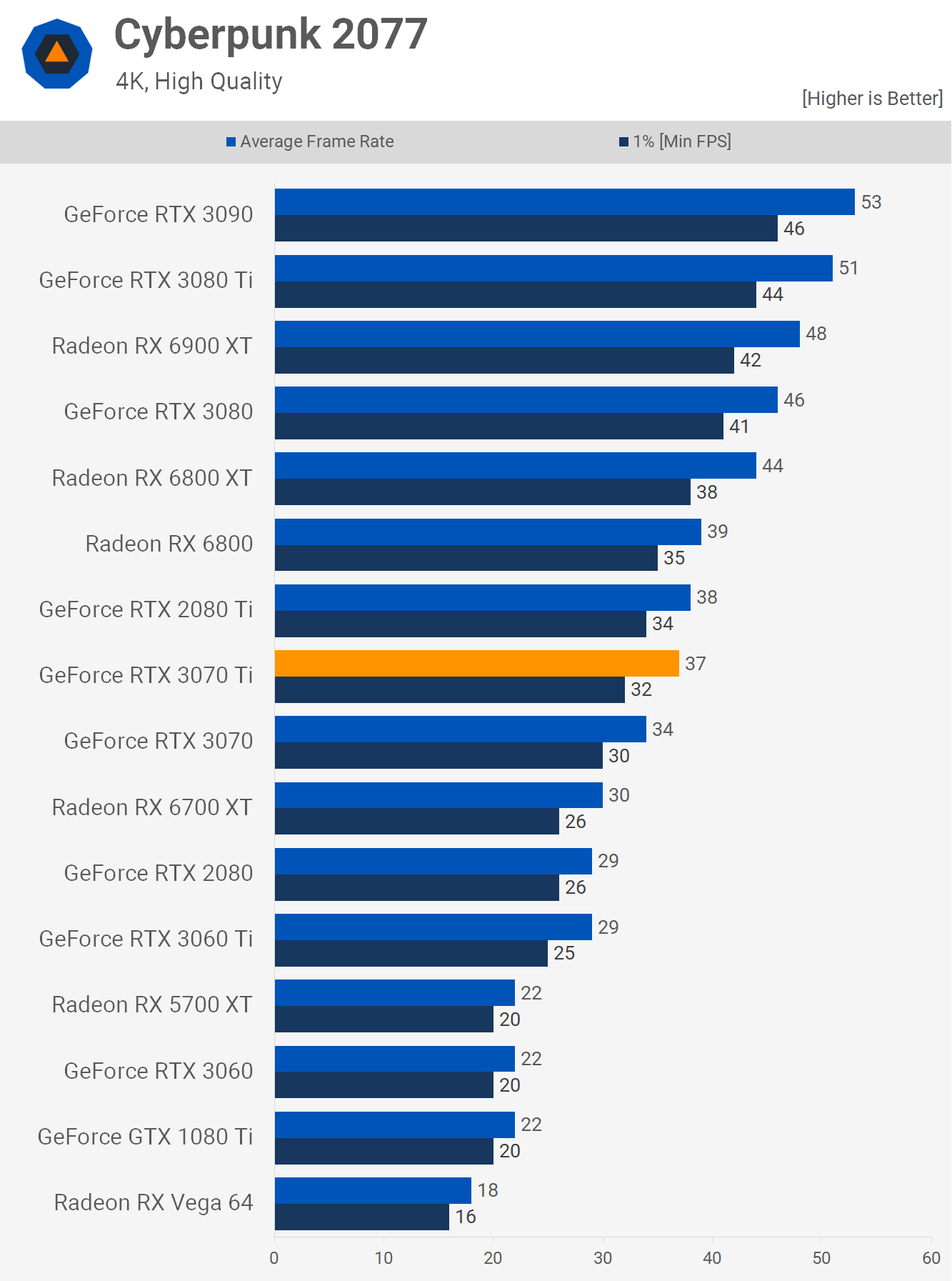
In Cyberpunk 2077 the 3070 Ti isn’t overly impressive, 73 fps on average meant it was just 7% faster than the original 3070, and 8% slower than the RX 6800.
Then at 4K we’re looking at just 37 fps on average using the high preset, not ultra. That’s a 9% boost over the 3070 and 5% slower than the RX 6800 or 16% slower than the 6800 XT.
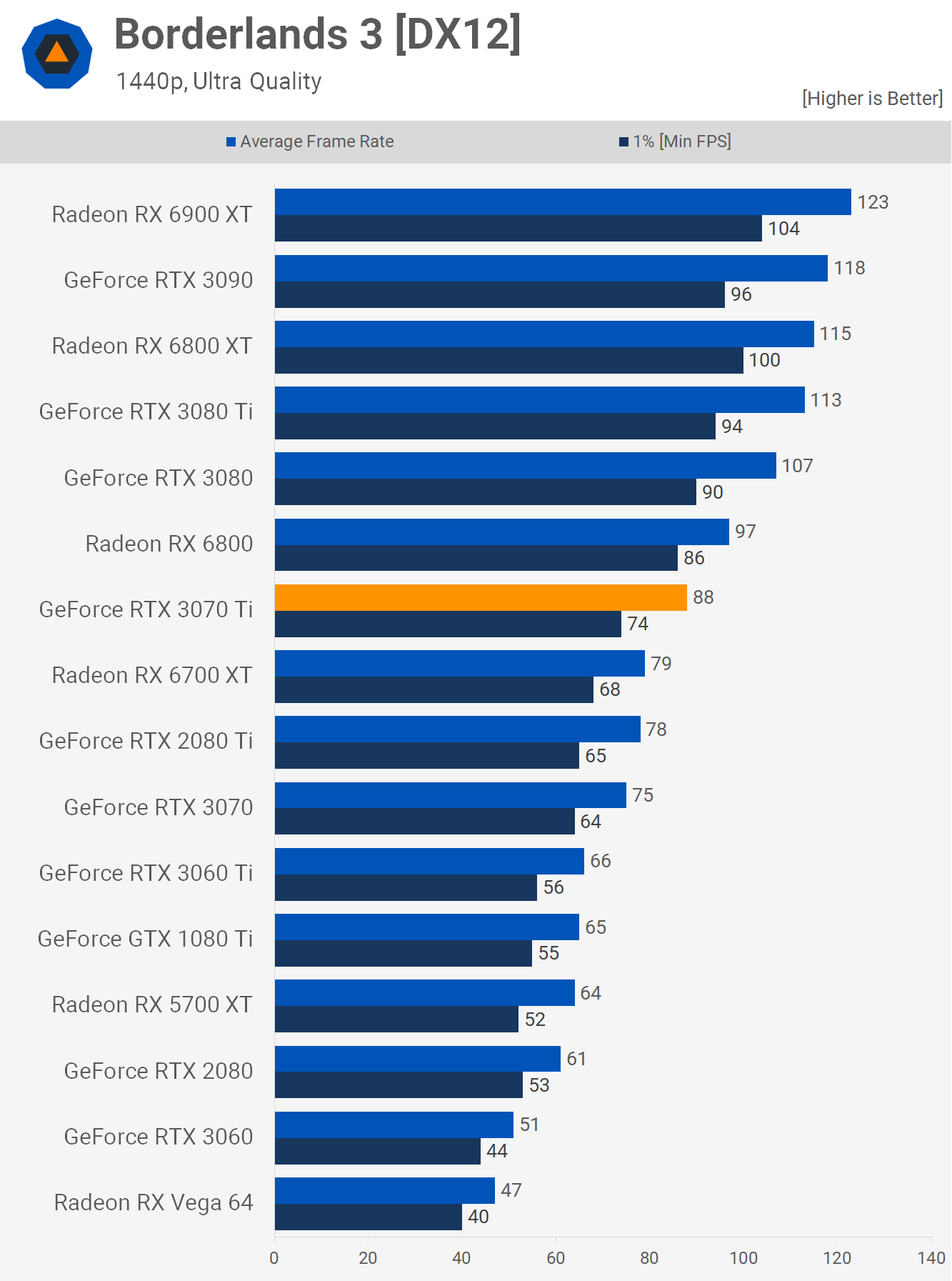
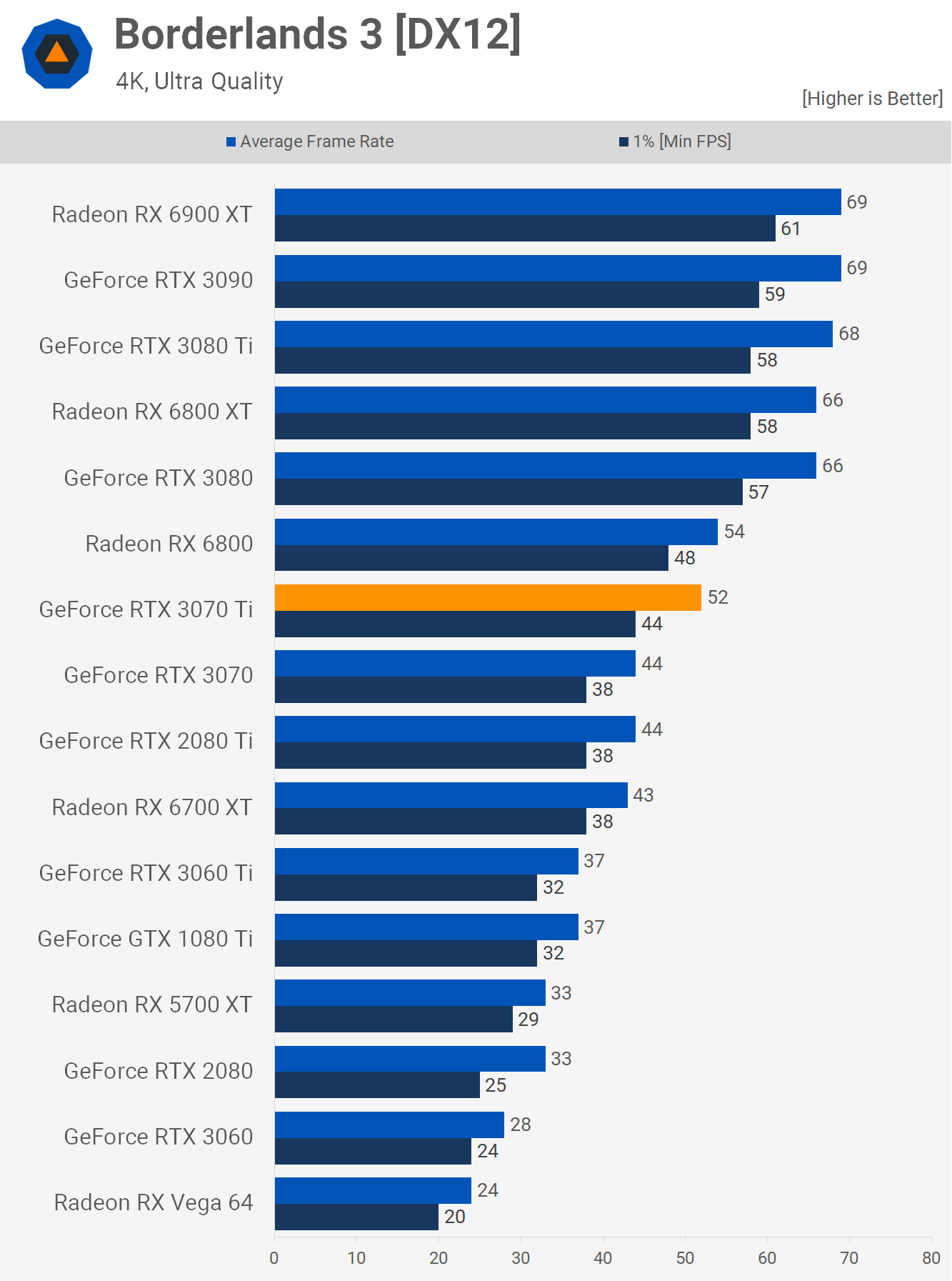
Borderlands 3 is AMD sponsored though like Shadow of the Tomb Raider I consider it to be a neutral title for testing. The results have the RTX 3070 Ti performing 9% slower than the RX 6800 and 23% slower than the 6800 XT. That said, the results are interesting as the 3070 Ti was 17% faster than the 3070 and that’s a much larger performance difference than we’ve seen in pretty much every other title tested so far.
A similarly large margin was seen at 4K, where the 3070 Ti was 18% faster than the original 3070, rendering 52 fps on average, enough to match the RX 6800.
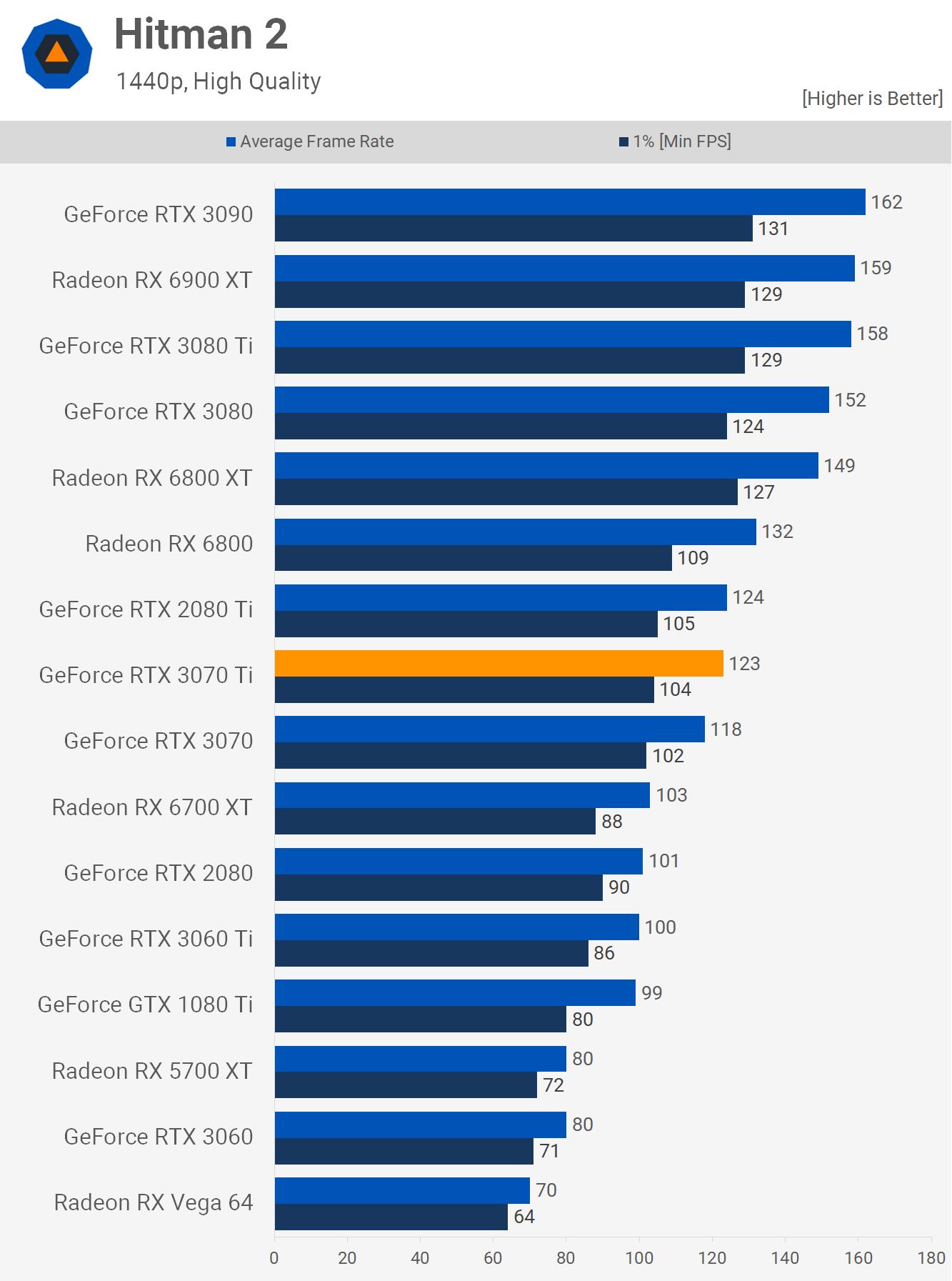
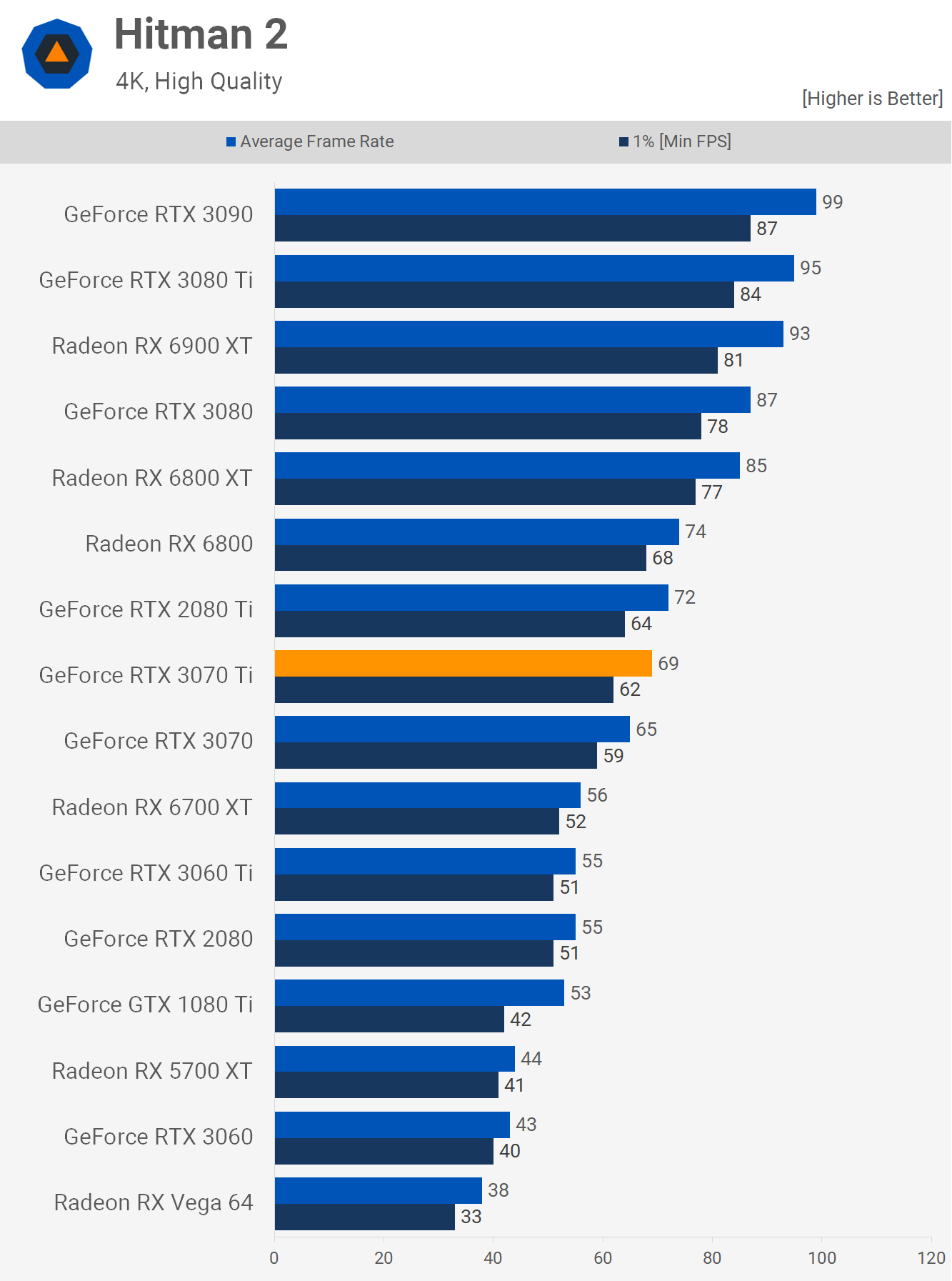
Hitman 2 provides us with fairly typical results with what we’ve seen thus far. The 3070 Ti was just 4% faster than the 3070 at 1440p and that meant it was 7% slower than the RX 6800 and 17% slower than the 6800 XT. The 4K results are more of the same: the 3070 Ti was 6% faster than the 3070, 7% slower than the RX 6800 and 18% slower than the 6800 XT.
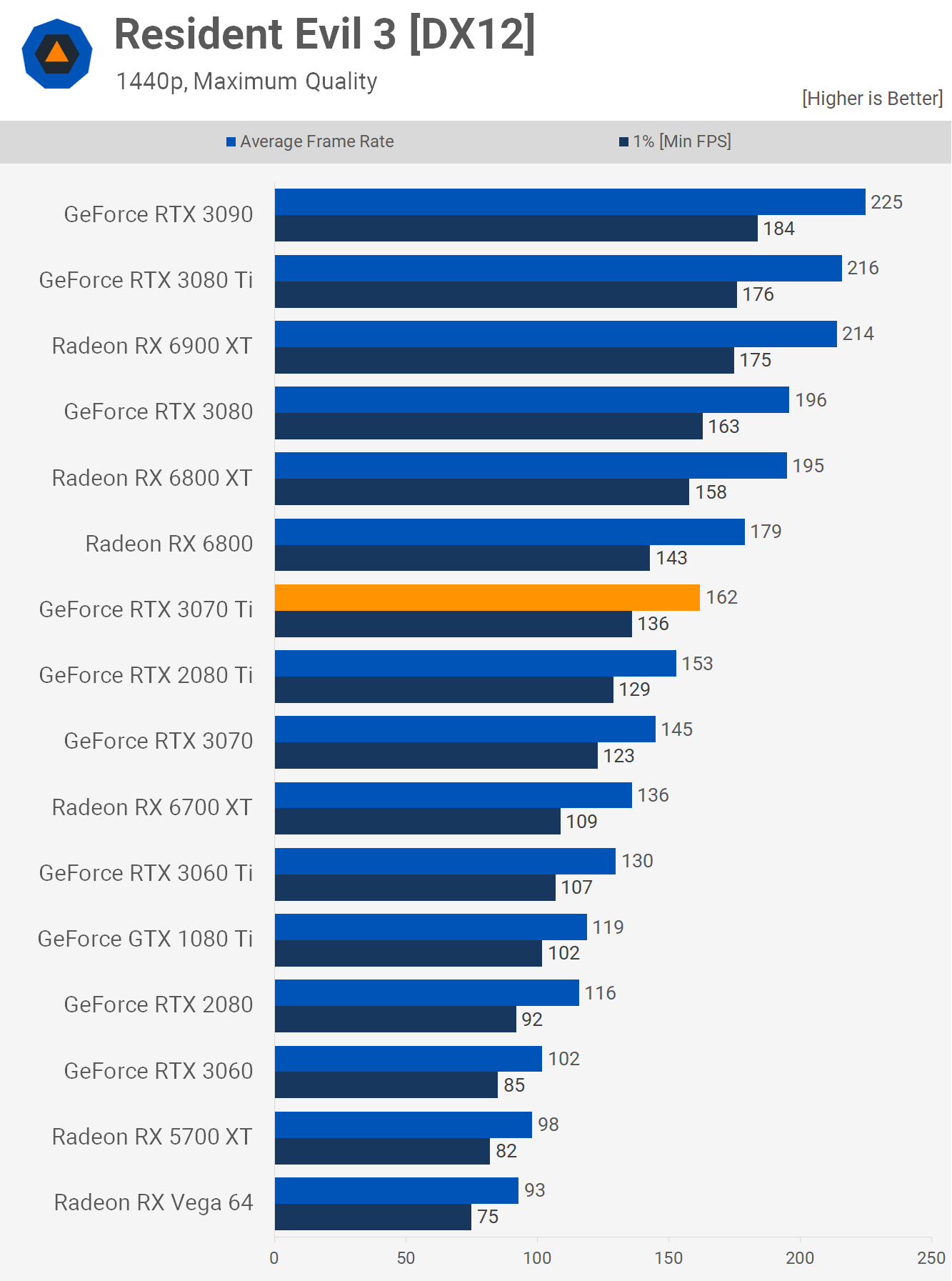
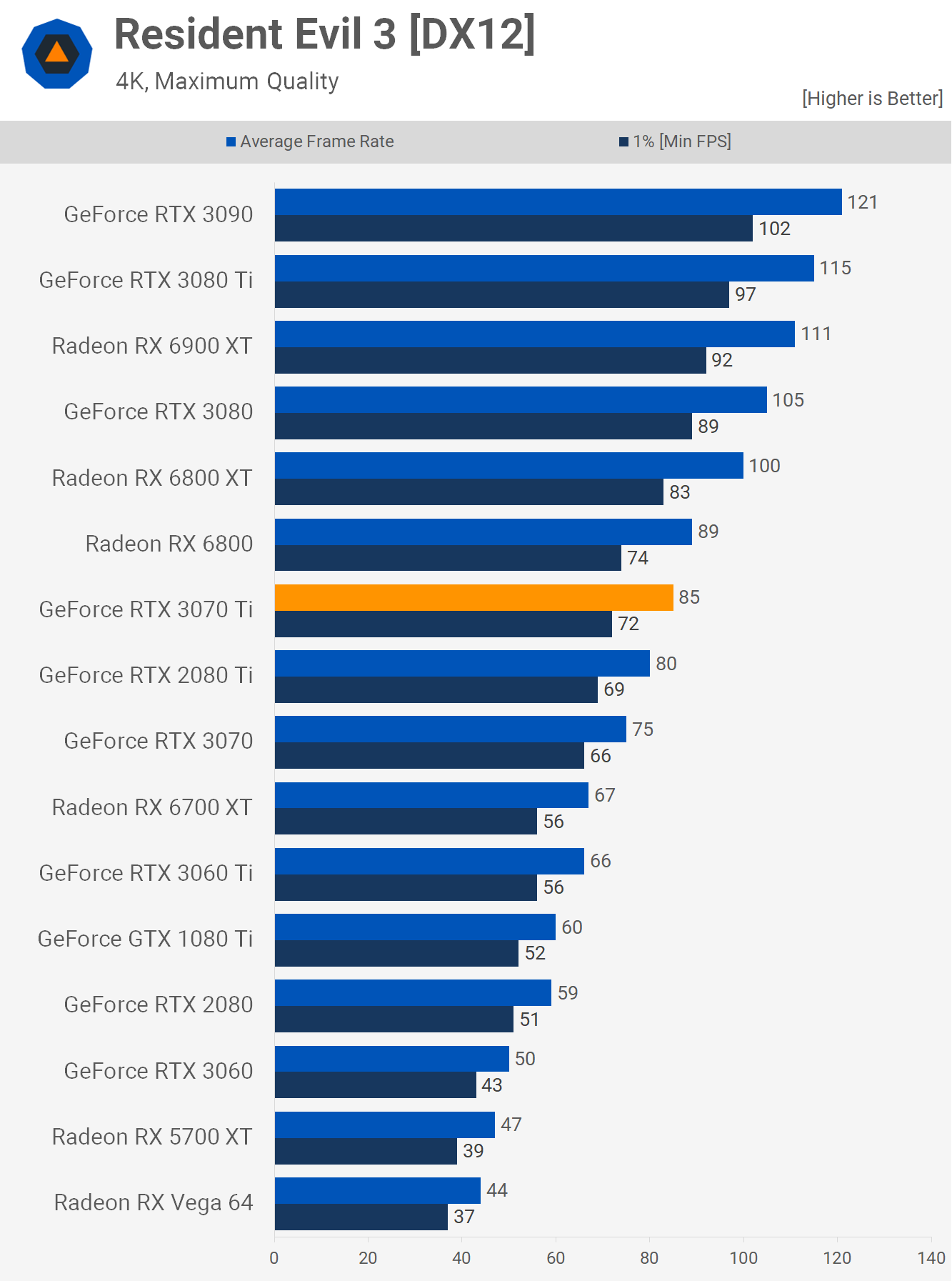
Resident Evil 3 is yet another title where the 3070 Ti loses out to the Radeon competition. Although it was 12% faster than the 3070, it’s 9% slower than the cheaper RX 6800 and 17% slower than the 6800 XT. Figures improve a little at 4K but not enough to overcome the Radeons.
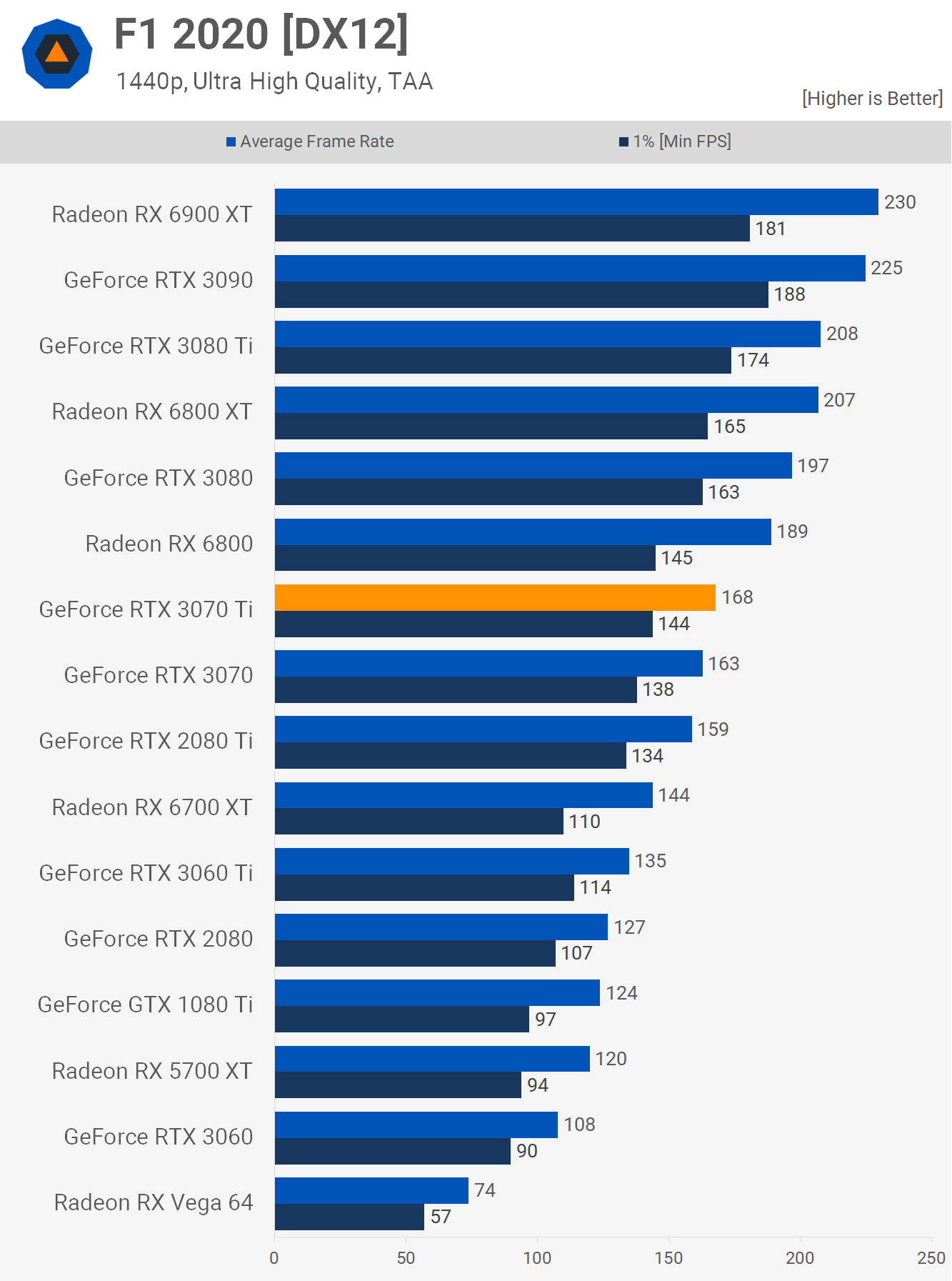
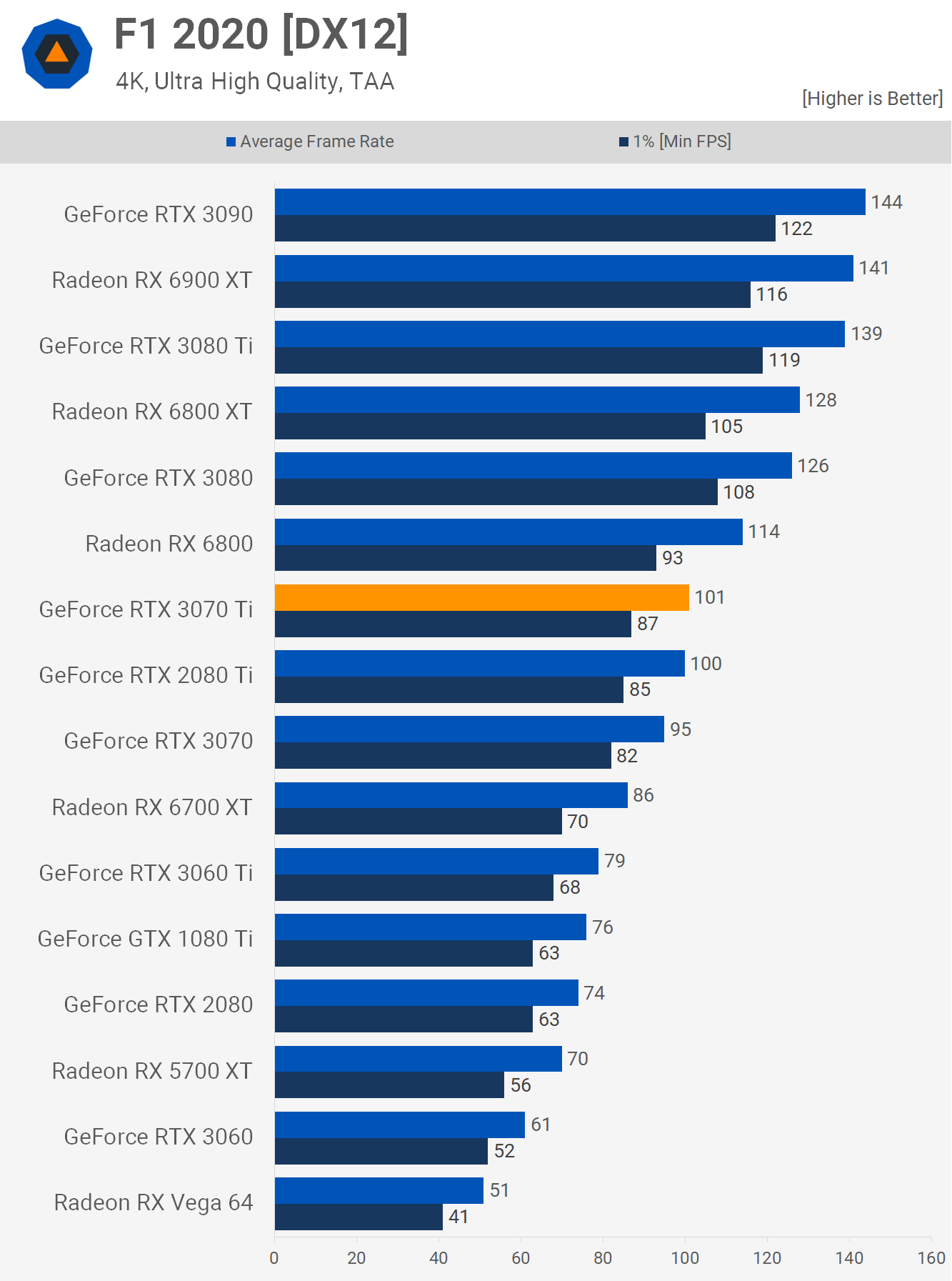
F1 2020 makes us finish on a weak note for the RTX 3070 Ti. Nvidia’s new $600 GPU is just 3% faster than the $500 version, and so it was 11% slower than the RX 6800 and 19% slower than the 6800 XT. Even at 4K the 3070 Ti receives a dusting, losing to the RX 6800 by an 11% margin and the 6800 XT by a 21% margin.
Average Performance
Here’s a summary of all the previous results with no surprises to be found. At 1440p, the RTX 3070 Ti is on average 8% slower than the RX 6800, and 18% slower than the 6800 XT, while beating the original RTX 3070 by 8%.
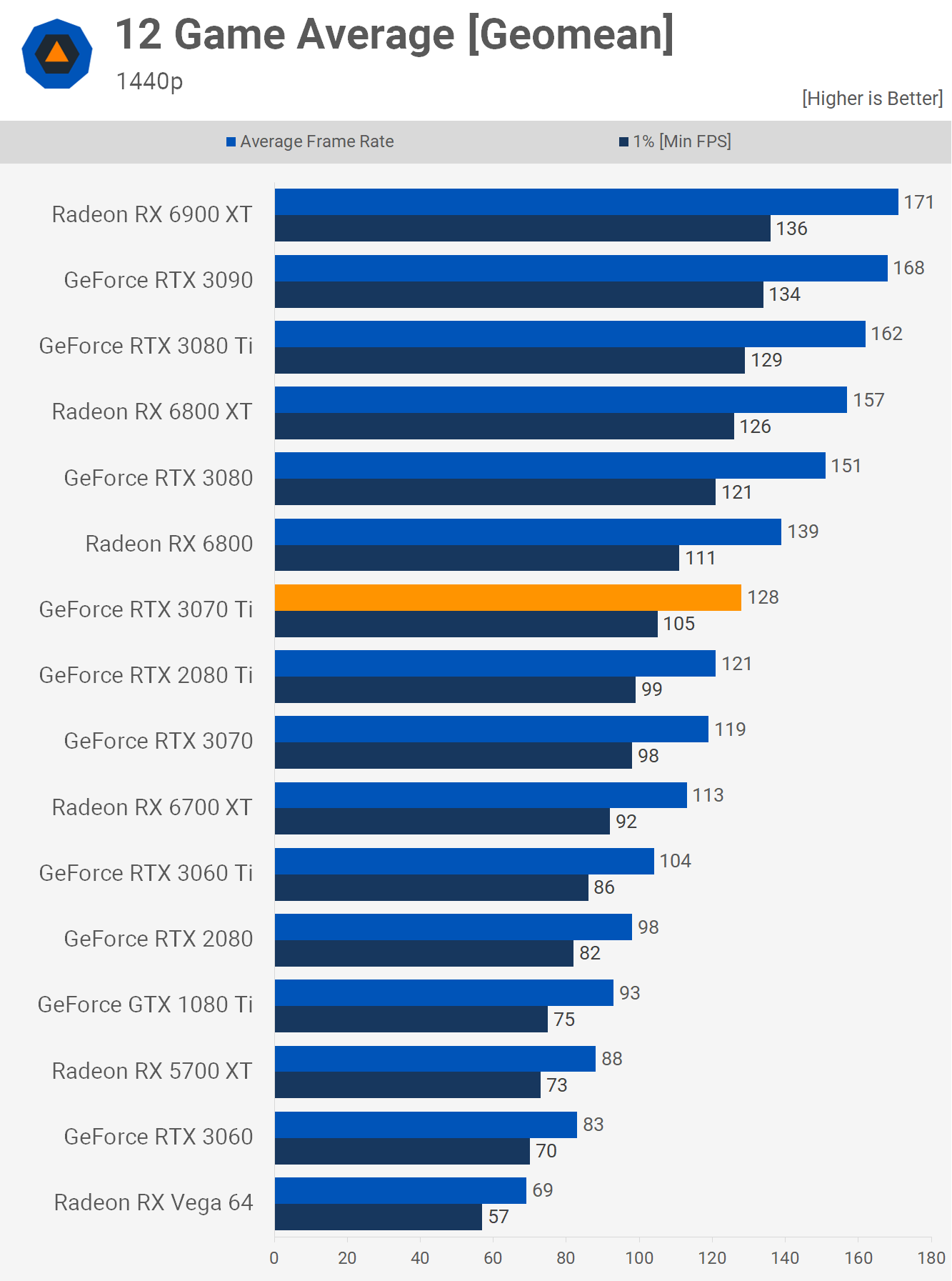
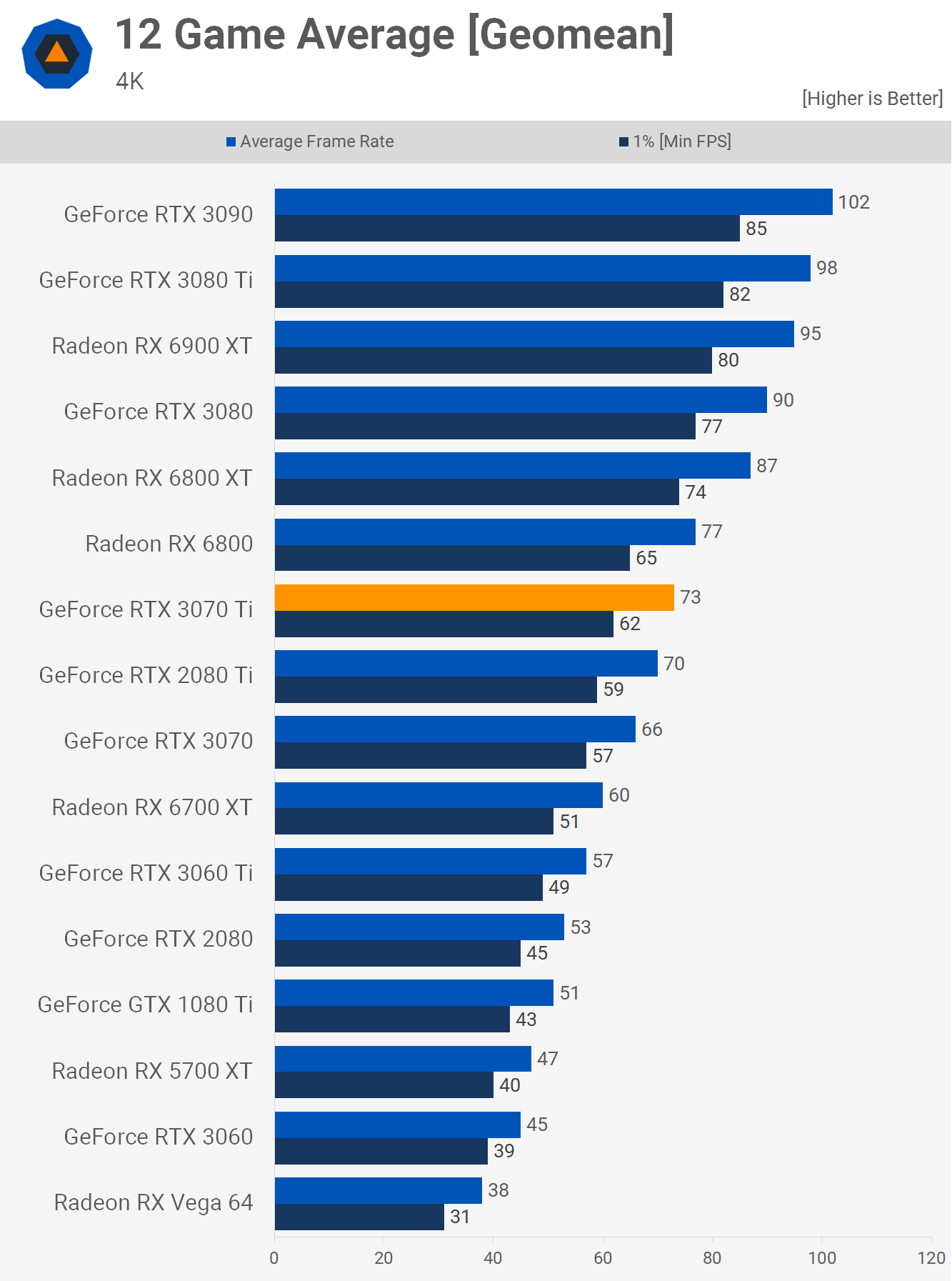
At least at 4K the 3070 Ti is able to pull out a double-digit margin over the 3070, if only just, beating it by 11% on average. Overall it remains ~5% slower than the RX 6800 and 16% slower than the 6800 XT.
Power Consumption
When it comes to power consumption, the RTX 3070 Ti consumes significantly more power than the RX 6800, increasing total system usage by 20%, and that’s a significant increase when factoring in entire system usage.
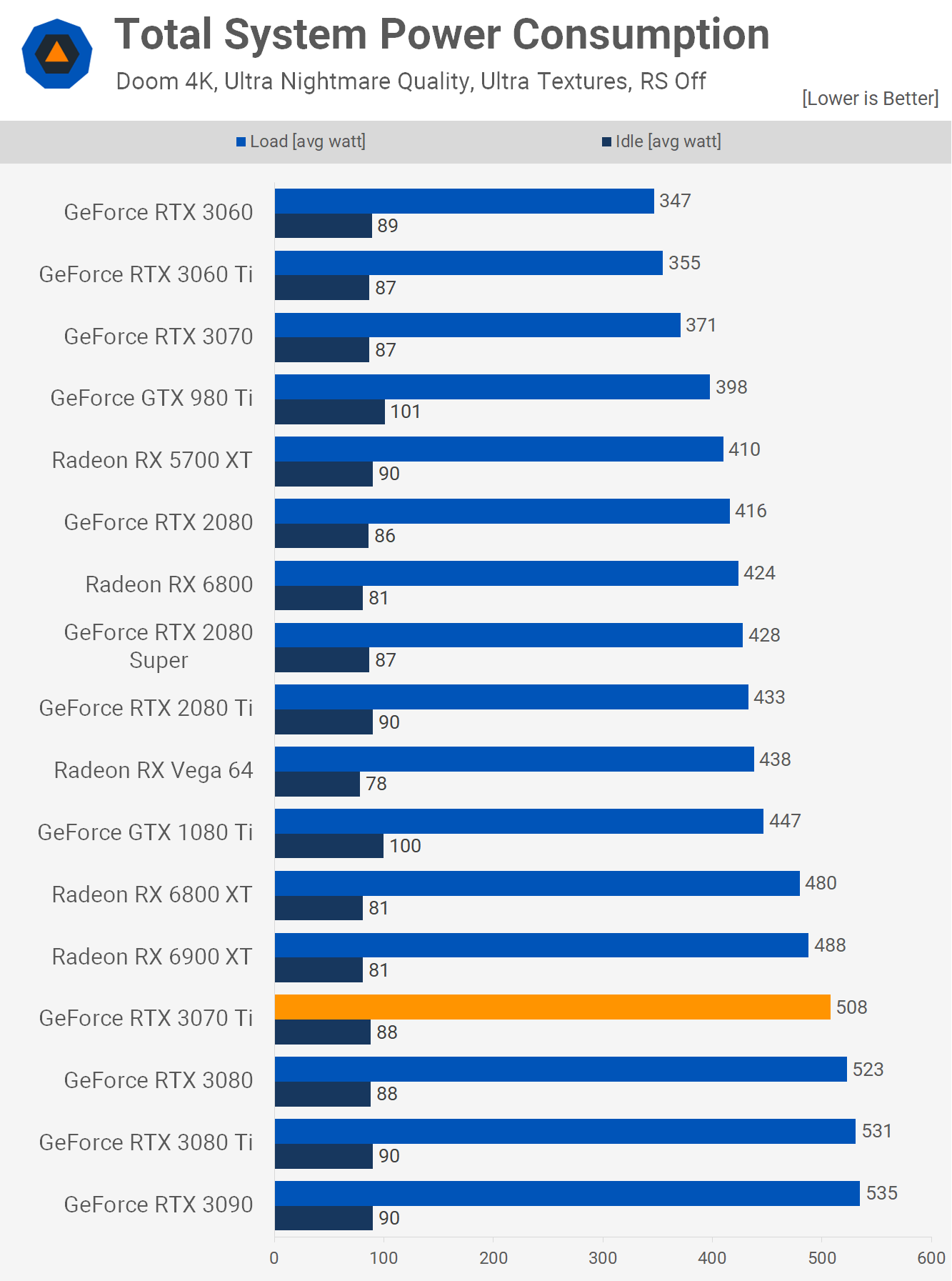
GPU Recap, What We Learned
That’s our look at the new GeForce RTX 3070 Ti, and now it’s time to make sense of it. But before we do, here’s a quick Ampere vs. RDNA2 recap of how we’ve called it so far…
In a mostly no-sense battle for gamers, between the GeForce RTX 3090 and Radeon RX 6900 XT, we picked the RTX 3090 as the clear winner here as it’s a no-compromise solution offering more VRAM and better performance at 4K. If you have money for the best and want the best, the 3090 is at least that, the 6900 XT is a compromise and at $1000 makes less sense than the 3090 at $1500.
Next, we have the battle between the RTX 3080 and RX 6800 XT. And again we went with the Nvidia GPU when making our 30 game benchmark analysis. The GeForce GPU offers a similar level of performance at 1440p with marginally better 4K results, but the deal breaker for AMD is the lack of DLSS-like technology, weaker encoding support, and immature ray tracing.
Picking between the RTX 3070 and RX 6800 has been more difficult. The RX 6800 benefits from a significant increase in VRAM, doubling what the 3070 offers to 16 GB, that’s nice and should see the Radeon GPU age far better. But the lack of DLSS (with FSR coming but in unknown form later this month), Nvidia’s better encoder and ray tracing support, it’s a close call, assuming both were readily available around the MSRP.
Then we had the Radeon 6700 XT vs. GeForce RTX 3070 battle, and for that one we went with Nvidia. The 6700 XT just wasn’t priced competitively enough.
As for the new GeForce RTX 3070 Ti, how does it slot into all of this? At $600, it’s priced to compete with either the RX 6800 or RX 6800 XT. However it’s slightly more expensive and 8% slower than the RX 6800, and then 8% cheaper but 18% slower than the 6800 XT. Then again, we have the DLSS and encoder factors, but to simplify this, let’s just remove AMD offerings from the equation and focus on Nvidia’s own products…
The simple math is this: the RTX 3070 Ti costs 20% more than the 3070 and is on average 8% faster. It does nothing to strengthen Nvidia’s position against AMD. There’s no extra VRAM, and gamers get a small performance increase to justify the extra $100 over the RTX 3070. For Nvidia, it virtually gives them the opportunity to sell higher quality silicon at a higher price for those willing to pay for it already.
And that’s about it. The RTX 3070 Ti is a much better release than the RTX 3080 Ti and yet it’s still kind of pointless if you won’t be able to buy any for $600. And with that, we’re going to end this review and get back to testing some older GeForce GPUs like the GTX 1060 and 1070 to see how they’re holding up in 2021 and if they’re viable options on the second hand market.
Shopping Shortcuts:
[ad_2]
Source link
